Blog and Articles
How to Create Holiday Menu Combos That Boost Profit [POS-Ready Ideas Inside]

![How to Create Holiday Menu Combos That Boost Profit [POS-Ready Ideas Inside]](https://cdn.prod.website-files.com/653392c432e997a1c5316037/69250aeb2c588a993639f4bb_Restaurant_Menu_Combos_Holidays.jpeg)
Top 10 Small Business Ideas to Start in Chicago [2025 Guide]

![Top 10 Small Business Ideas to Start in Chicago [2025 Guide]](https://cdn.prod.website-files.com/653392c432e997a1c5316037/69249ab6691575e94a410d78_Chicago_Small_Busineess_Ideas%20(1).jpg)
Top 5 Thanksgiving Foods Your Restaurant Must Offer [2025 Edition]

![Top 5 Thanksgiving Foods Your Restaurant Must Offer [2025 Edition]](https://cdn.prod.website-files.com/653392c432e997a1c5316037/6924e885662ef30a06a23f50_Thanksgiving%20Foods%20Your%20Restaurant%20Must%20Offer%20(1).jpg)
.webp)

5 min read
If you're running a QSR in 2025, you're not just managing food costs and labor. You're navigating tax rules, expansion decisions, compliance paperwork, and trying to stay profitable across multiple locations. And you're not alone.
The U.S. QSR market is expected to grow from $1.05 trillion today to $1.93 trillion by 2032. That kind of growth doesn’t just happen in spreadsheets. It happens in places like Georgia, Florida, and Arizona — where operators are adding stores, testing new formats, and competing on speed, service, and margins.
But if there’s one thing growth operators know, it’s this: new markets bring new risks. Every state has its own mix of taxes, labor rules, and reporting requirements. That’s where the right systems, especially your POS, can make or break your expansion.
Let’s walk through the ten U.S. states where QSRs are booming — and what it really takes to grow smart in each one.
1. California: Growth Meets Complexity
With more than 68,000 restaurants, California leads the country in volume and diversity. But it’s also one of the most complex states to operate in.
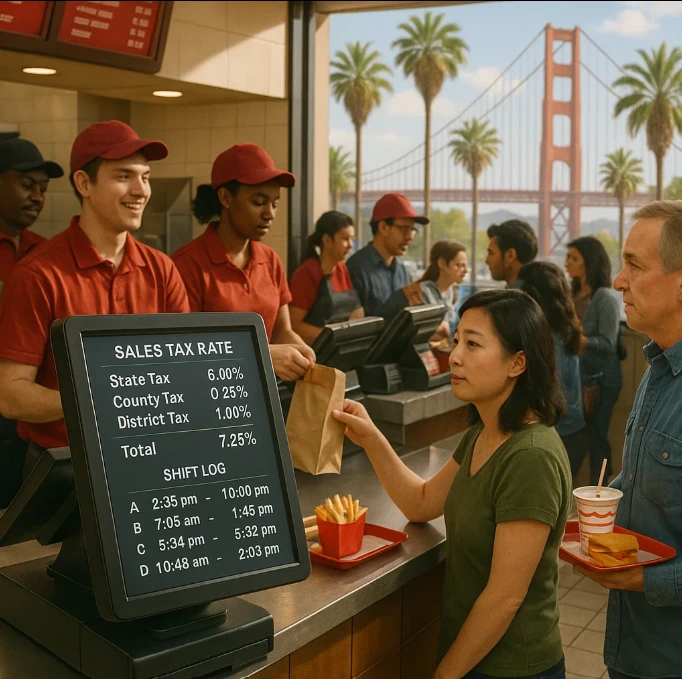
Why operators are expanding here:
- Huge, tech-forward consumer base
- Premium QSR concepts perform well
- Market size and density create strong unit economics
What to watch:
- The 80/80 rule can mean you pay tax on 100% of sales
- Base 7.25% state tax plus local jurisdictions reaching 10.75%
- Labor law triggers start daily after 8 hours, not weekly
- Meal and rest break rules are enforced strictly
What helps:
A POS that supports manual tax configuration, logs break compliance, and helps manage employee shifts without surprises.
2. Texas: Lean Regulations, Strong Demand
44,177 total restaurants, projected 3.3% franchise growth rate in 2025. Texas offers one of the most business-friendly environments in the country, which is why thousands of franchisees are choosing to scale here.
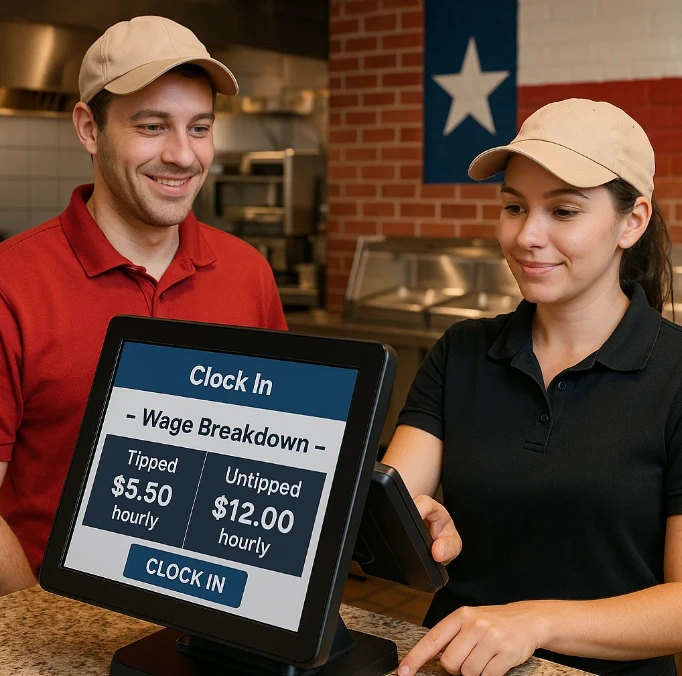
What’s driving growth:
- No state income tax
- Expanding urban markets
- Fast-growing consumer base
Key compliance factors:
- Tip credit rules: $2.13/hour for tipped staff
- Local sales taxes vary up to 8.25%
- Simple overtime rules, but poor tracking can still cost you
What helps:
A POS that can cleanly separate tipped and hourly staff, map local taxes, and produce clean payroll exports.
3. Florida: The Volume Game
Florida has nearly 35,000 restaurants and continues to add thousands more. But tourism-driven growth brings its own set of challenges.
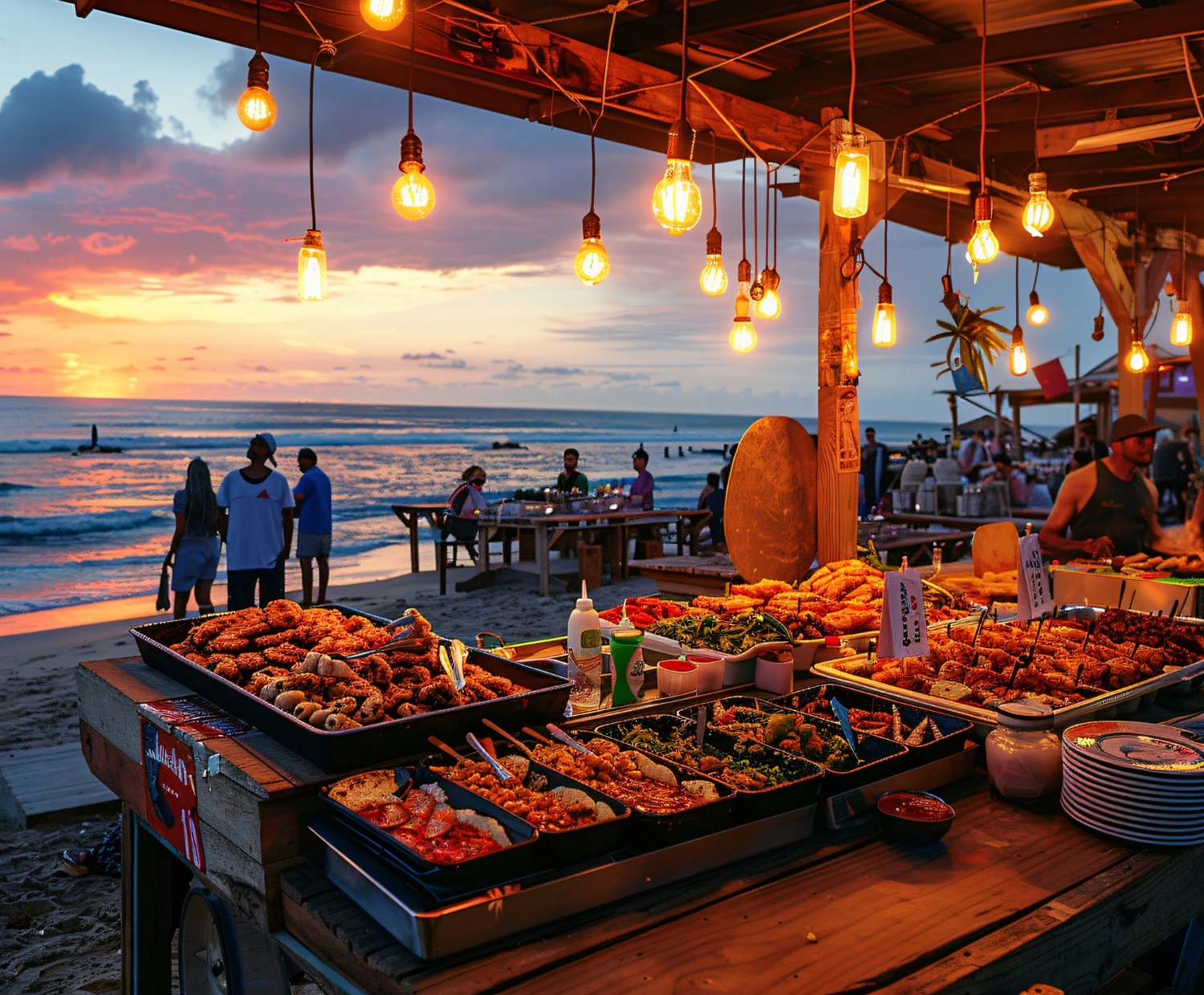
Why it’s booming:
- No state income tax
- Strong tourism and delivery demand
- Fast migration growth
Where operators get stuck:
- Tax on prepared meals (but not always cold items)
- County surtaxes vary by location
- No required breaks, but federal labor rules still apply
What helps:
Menu-level tax mapping, flexible scheduling, and audit-ready labor tracking from your POS.
4. New York: Premium Market, High Stakes
In cities like New York, consumers spend more — but so do operators who don’t understand the compliance landscape. 34,359 total restaurants, strong urban density supporting high per-capita spending.
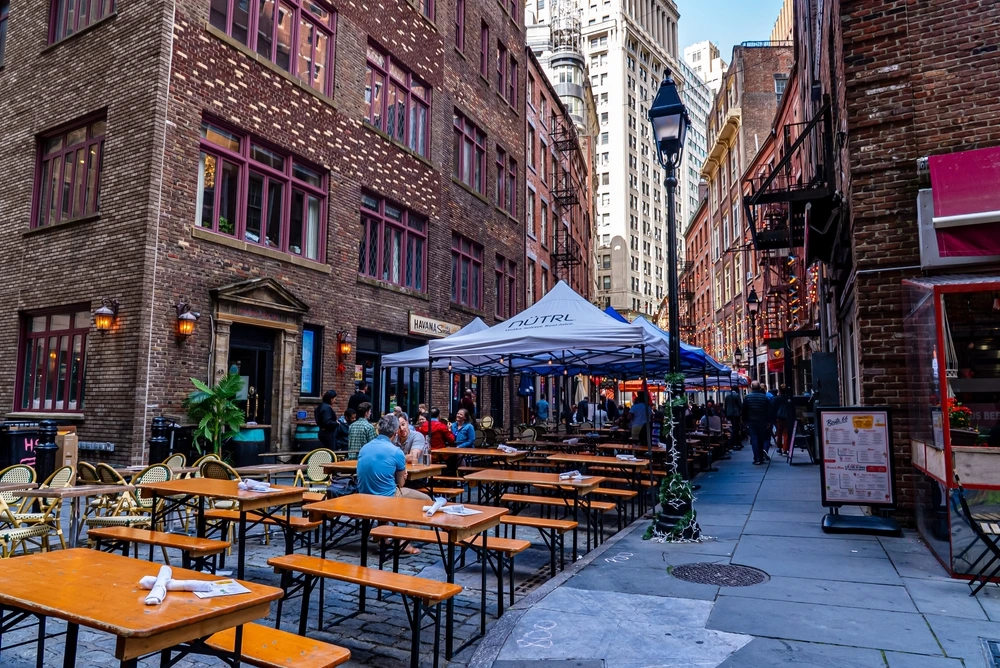
Why QSRs choose NY:
- High per-capita spending
- Strong urban density
- Brand visibility in premium markets
What makes it tricky:
- Fair Workweek laws require advance scheduling, recordkeeping, and predictability pay
- Minimum wage rules vary
- Health grade impacts traffic and ratings
What helps:
Labor forecasting tied to sales data, scheduling tools built into your POS, and clear audit logs for every shift.
5. North Carolina: The Scalable Option
14,455 total restaurants and #2 state for franchise growth in 2025. This state is a quiet winner for QSR growth. It doesn’t have California’s complexity or New York’s premiums, but it’s easy to scale here.
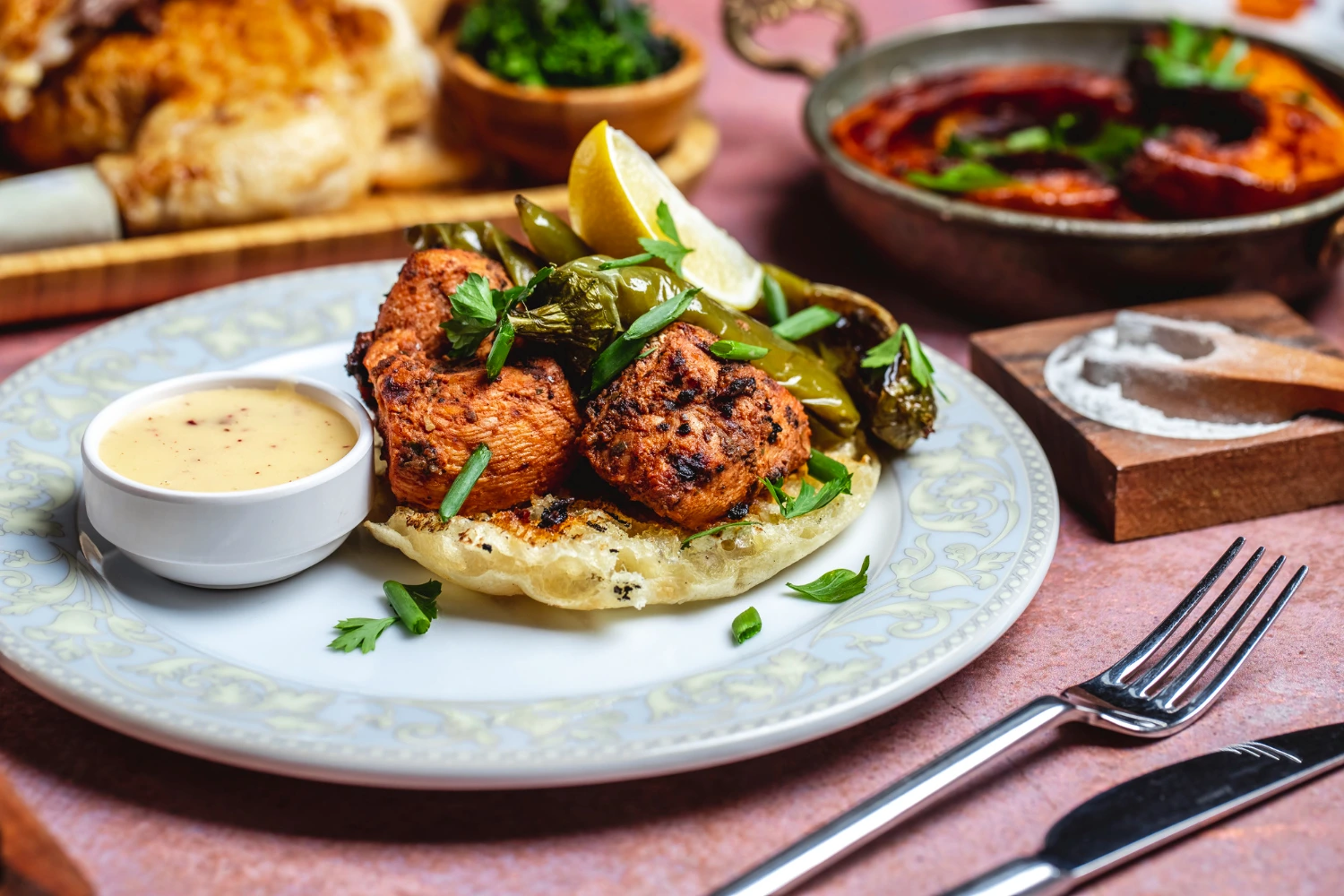
What’s working for operators:
- Strong franchise growth
- Raleigh and Charlotte are key metros
- Business-friendly state oversight
What to know:
- No mandatory meal/rest breaks for employees 16 and older, but must provide 30-minute break for under-16 employees after 5 hours of work
- State follows federal labor law, but reporting matters
What helps:
Role-based permissions in your POS, plus shift-level logging that keeps records clean and audit-ready.
6. Georgia: America’s Franchise Capital
15,864 total restaurants and #1 state for franchise growth in 2025 with 6.7% projected growth. In 2025, Georgia is expected to lead the U.S. in franchise growth. The state is making it easy for QSRs to plant their flag.
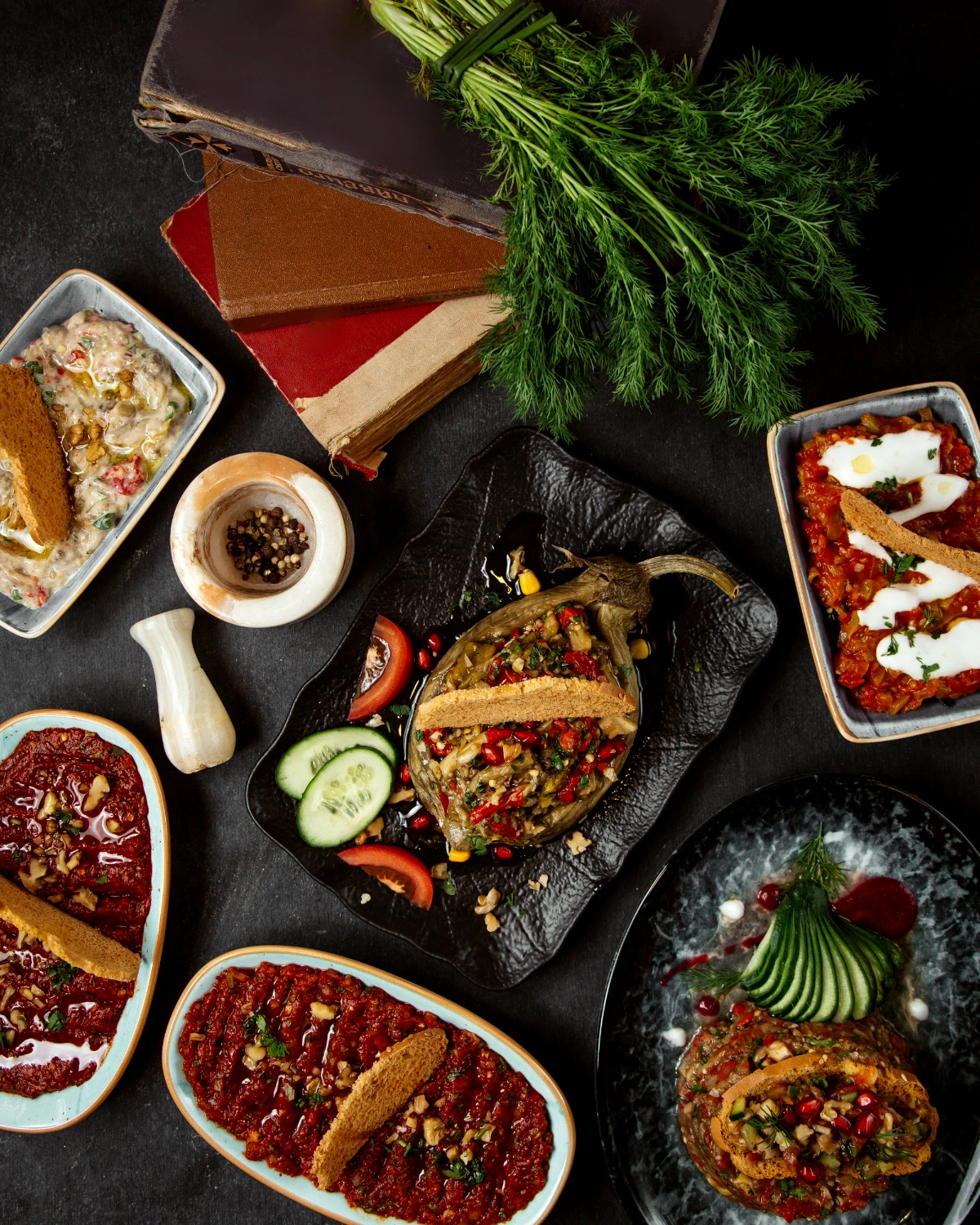
Why it’s a top pick:
- Affordable cost of entry
- Streamlined regulatory processes supporting rapid expansion
- Atlanta's infrastructure
- $37 billion+ in franchise economic output
What to manage:
- No surprises, but clean reporting is essential
- Regulatory process is fast, but unforgiving if neglected
What helps:
Centralized menu management, clear daily closeouts, and customizable tax and payroll reporting.
7. Arizona: Strong Growth, Unique Taxes
9,170 total restaurants and #4 state for franchise growth in 2025. Arizona is expanding fast, but its tax system operates differently than most states. Many operators miss this during early setup.
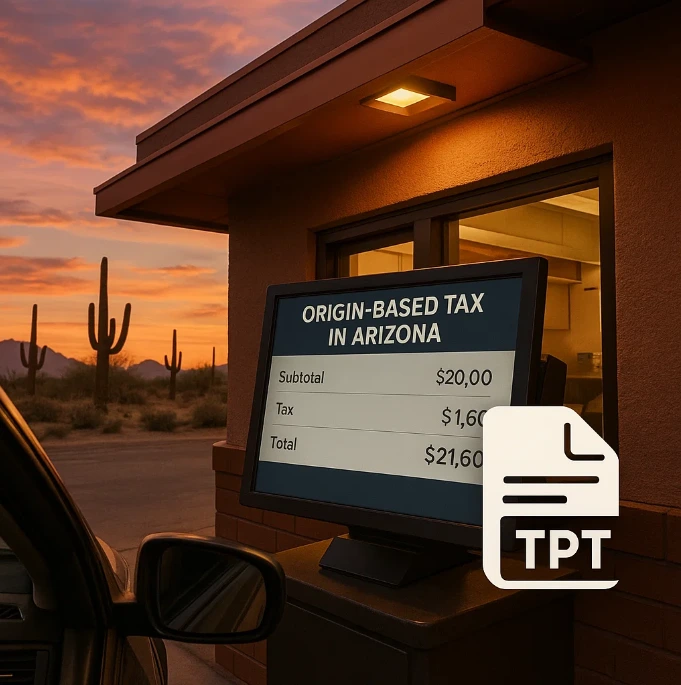
Why chains are expanding here:
- Metro growth in Phoenix and Tucson
- Yuma among top franchise growth markets
What’s different:
- Origin-based tax system (tax based on seller’s location)
- TPT adds another layer of local variation
- Hot meals, sandwiches, and food served with tableware are taxable
What helps:
A POS that handles origin-based taxes and allows for manual overrides based on exact address and product category.
8. Virginia: High Growth, High Stability
12,166 total restaurants and #3 state for franchise growth with 6.00% projected growth in 2025. Virginia is close to several metro markets, and it’s expected to add over 1,400 franchise businesses this year alone.
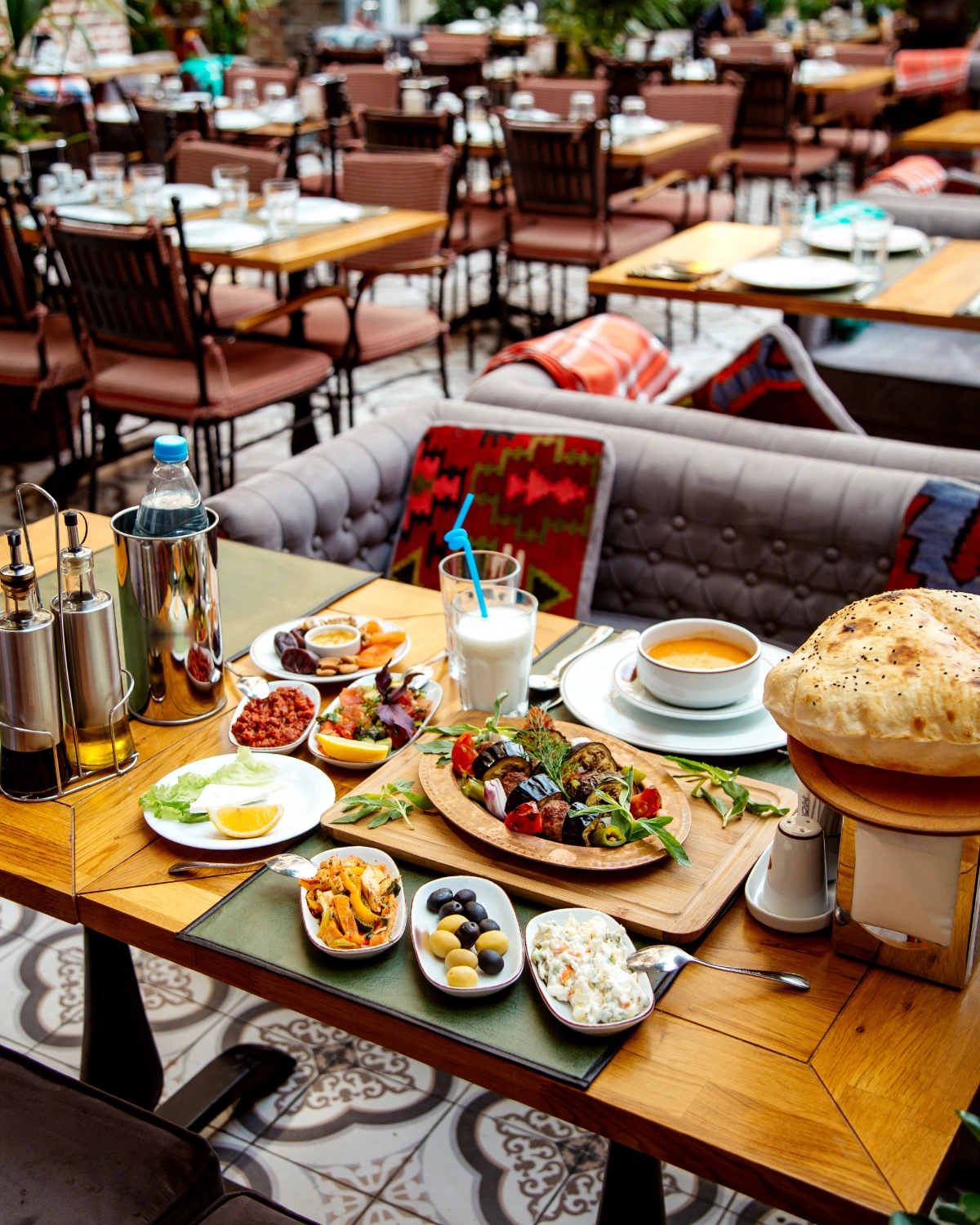
What’s appealing:
- Diverse workforce
- Balanced urban-suburban spread
- Business-friendly incentives for multi-unit operators
What to keep in mind:
- High growth doesn’t mean low risk — reporting still matters
- Payroll and gross revenue reporting must be accurate
What helps:
QuickBooks integrations, cloud backups, and centralized dashboards for region-wide oversight.
9. Pennsylvania: The Reliable Middle Ground
With over 18,000 restaurants, Pennsylvania is a mature QSR market — but still open to new formats and delivery-first models.
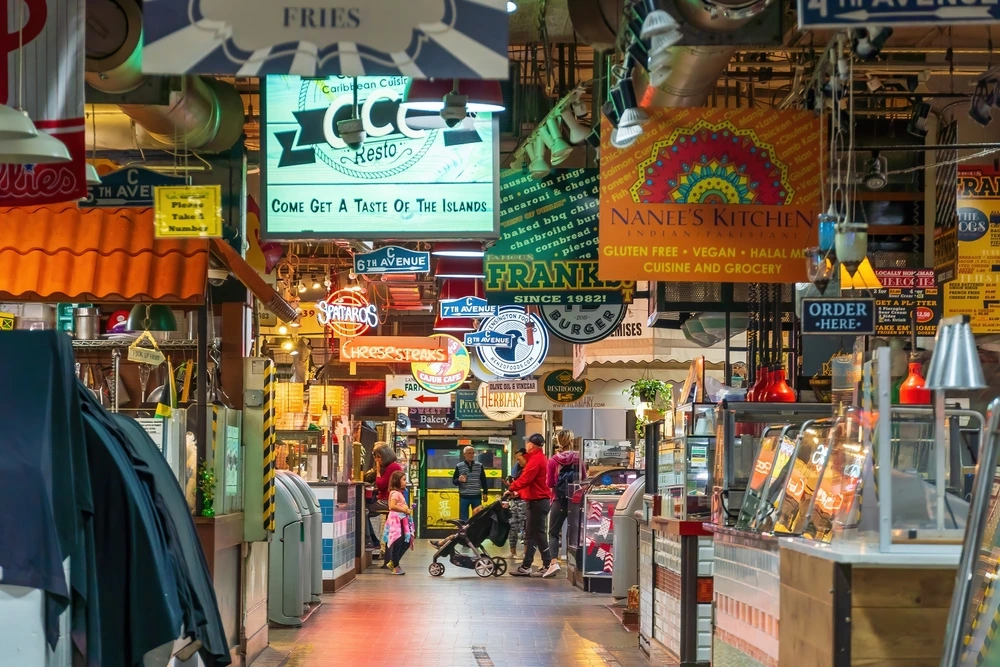
Why it’s attractive:
- Access to urban consumers
- Cost-effective second markets (e.g., Allentown, Harrisburg)
- Established delivery infrastructure
Where things get tricky:
- Tip credit rules apply only if employees make more than $135/month in tips
- Overtime after 40 hours
- Wage compliance is monitored closely
What helps:
Tip pooling features, pay threshold alerts, and state-by-state reporting are must-haves in your POS.
10. Tennessee: Low Overhead, Fast Decisions
10,118 total restaurants and #7 state for franchise growth in 2025. Tennessee offers simple tax structures and favorable regulations, which is why franchise groups are expanding here aggressively.
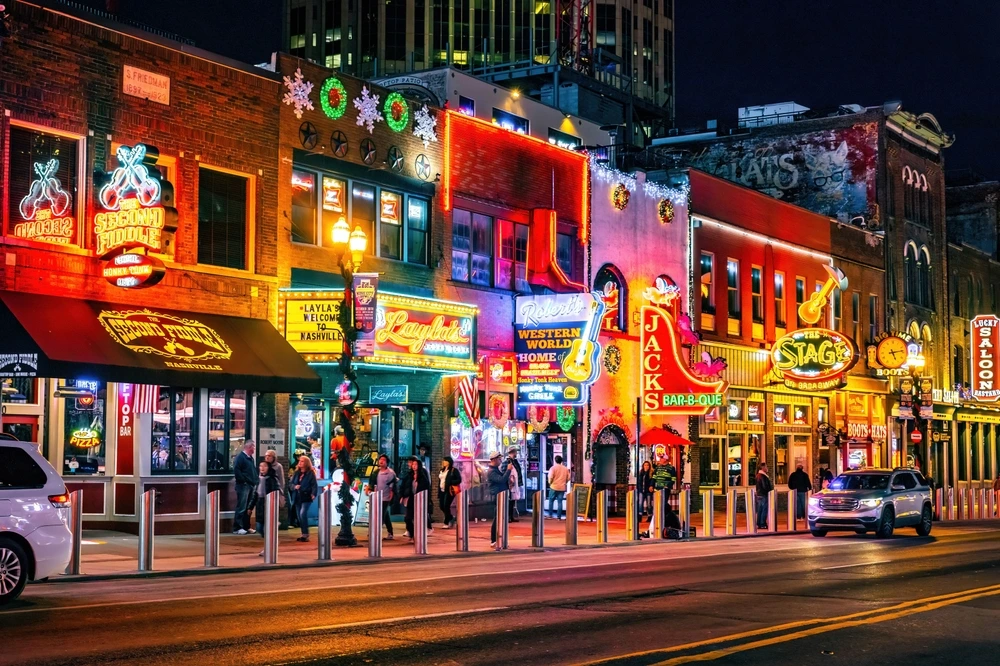
Why QSRs are scaling fast:
- No income tax
- Favorable thresholds for business tax
- Strong growth in Nashville and secondary cities
What operators need to handle:
- Franchise tax (0.25% on net worth)
- Higher reporting requirements once you cross $100K gross receipts
What helps:
A POS that tracks store-level revenue cleanly and helps you plan taxes before the year ends.
What Smart Operators Look for in a POS System Today
Growth is exciting — but it comes with risk. If your POS system doesn’t support multi-state operations, compliance automation, or audit preparation, it may slow you down more than it helps.
.webp)
.webp)

Here’s what multi-location QSR owners are demanding in 2025:
| Feature | Why It Matters |
|---|---|
| Manual tax configuration | For states like Arizona or California, this is critical |
| Shift and break tracking | Labor law fines are real — don’t rely on guesswork |
| QuickBooks integration | Centralized financials and tax-ready reporting |
| Role-based permissions | Prevent fraud and track accountability |
| Multi-location sync | Standardize menus, pricing, and reporting |
| Offline mode + cloud access | Stay operational even when your internet isn’t |
Final Thoughts: You Can’t Scale What You Can’t See and Control
Expansion without compliance is a gamble. Growth-focused QSRs don’t just think about their next location — they think about what each state demands, how their team operates, and whether their tools support them at scale.
That’s where OneHubPOS fits in. Our system is designed for operators who want full visibility, manual control where it matters, and integrations that simplify the back office.
If you’re ready to grow without losing sleep over labor rules or tax deadlines, we’re ready to show you how.
Talk to our team to see how OneHubPOS supports multi-location QSRs that want to move fast — and stay compliant.
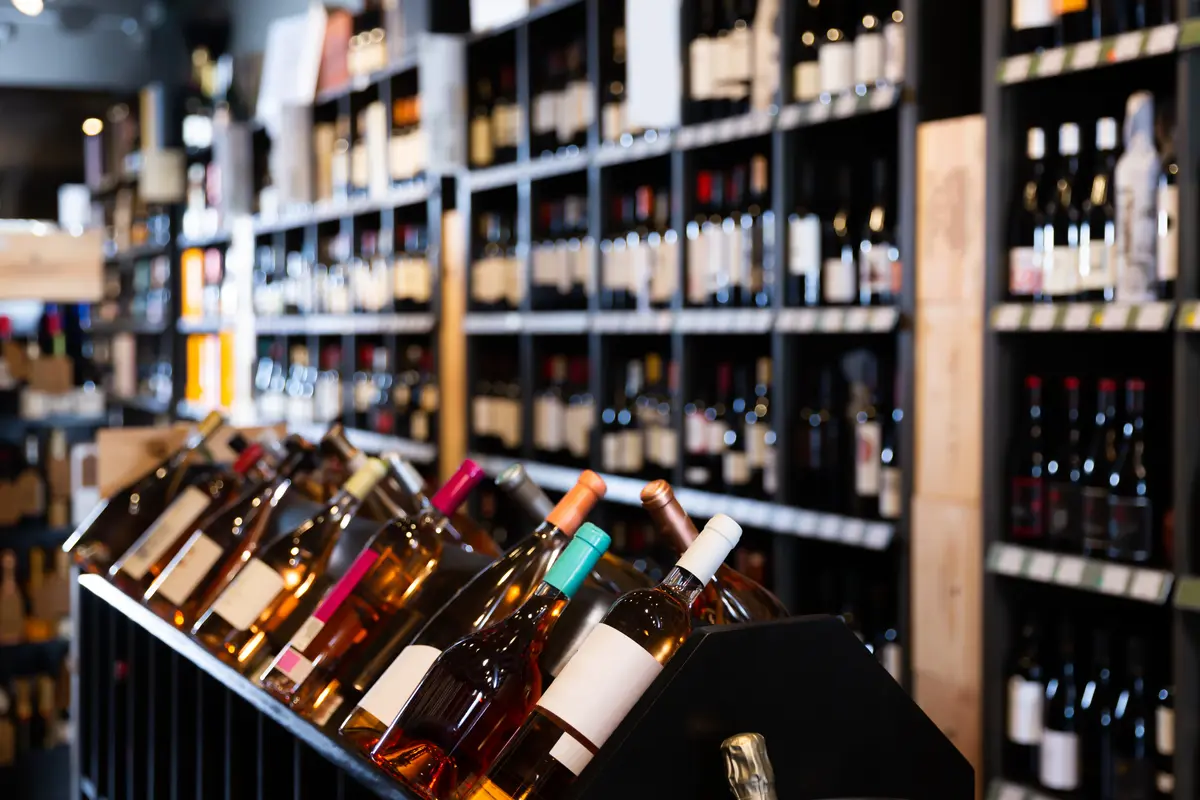

5 min read
Let’s Get Real
You didn’t get into the liquor business to stress about settings, update firmware, or chase down missing reports. You did it to build something: a store that moves inventory, keeps regulars happy, and turns a steady profit.

But if your POS system is clunky, confusing, or not built for the way liquor retail really works, it’s holding you back. You’re wasting time on workarounds, missing out on rebates, or crossing your fingers that you’re still compliant.
In this guide, we will cut through the tech jargon and give you a straight-up, practical way to choose a liquor POS solution that works for your business.
What Liquor Stores Need That Regular POS Systems Miss
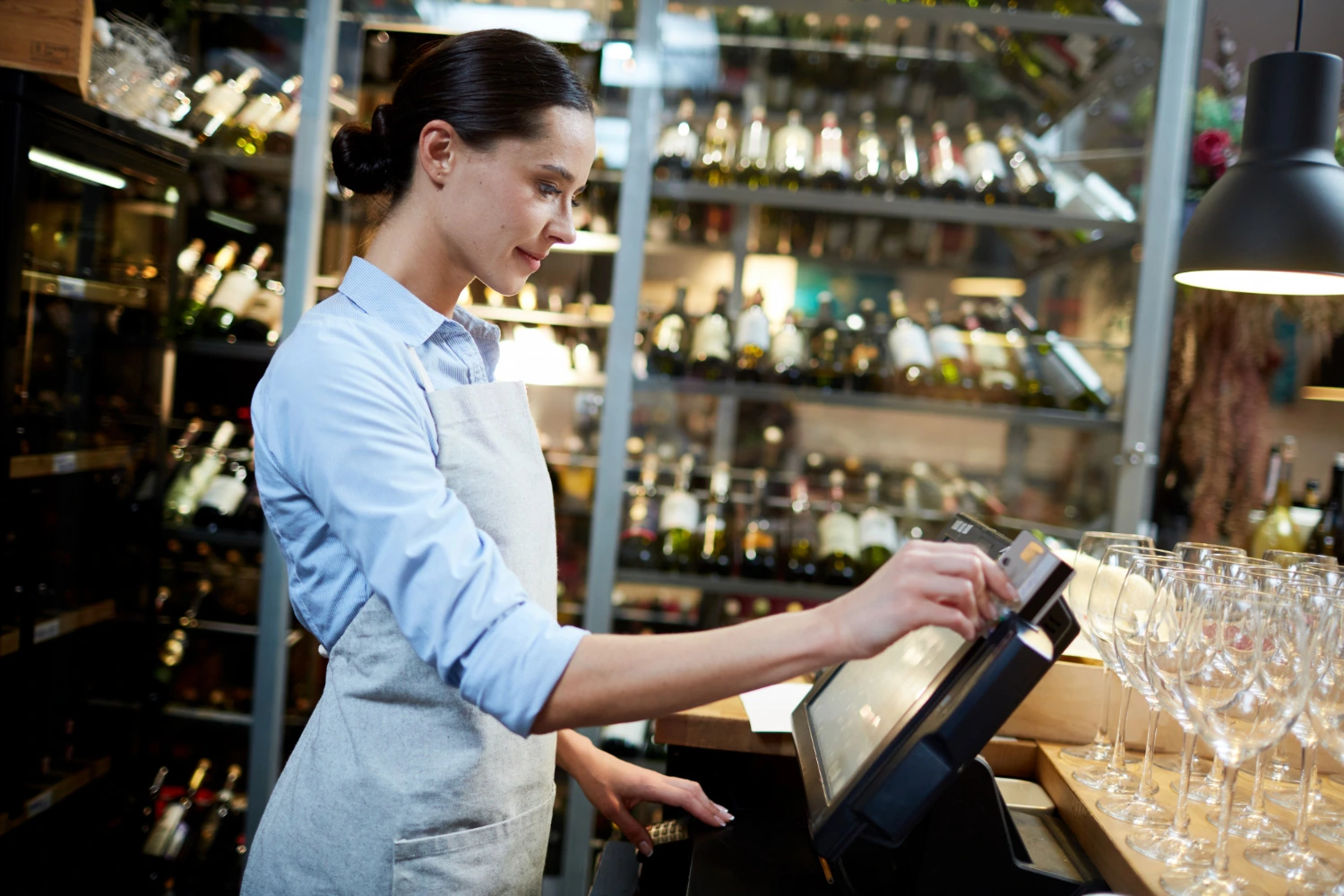
Operating under the strict rules that come with alcohol sales means your needs stretch beyond basic checkout. Liquor stores face unique challenges:
- Age-Restricted Sales: Automated, reliable ID scanning keeps you compliant. Manual checks are a risk you can’t afford.
- Dual Pricing Rules: Compliant cash discounts or surcharges are built-in, not jury-rigged with unclear signage or complex accounting.
- Tobacco & Lottery ScanData Compliance: ScanData rebate-eligible reporting is essential for vendor rebates and regulatory reporting.
- Massive SKU Libraries: Thousands of products, rotating brands, and multi-pack variations demand granular, accurate stock management.
- Processor Flexibility: Choose or switch providers without hidden fees or contracts.
- Staff Access Control: Restrict access to refunds, reporting, or pricing — critical for compliance and loss prevention.
Without these, owners report workaround chaos, unreliable reporting, and compliance nightmares lurking just out of sight.
Liquor POS Core Features You Should NEVER Compromise On
A modern liquor store faces real operational challenges: compliance risk, tight margins, staff oversight, and multi-location visibility. Your POS should not just handle transactions — it should help you run a tighter, more profitable business.
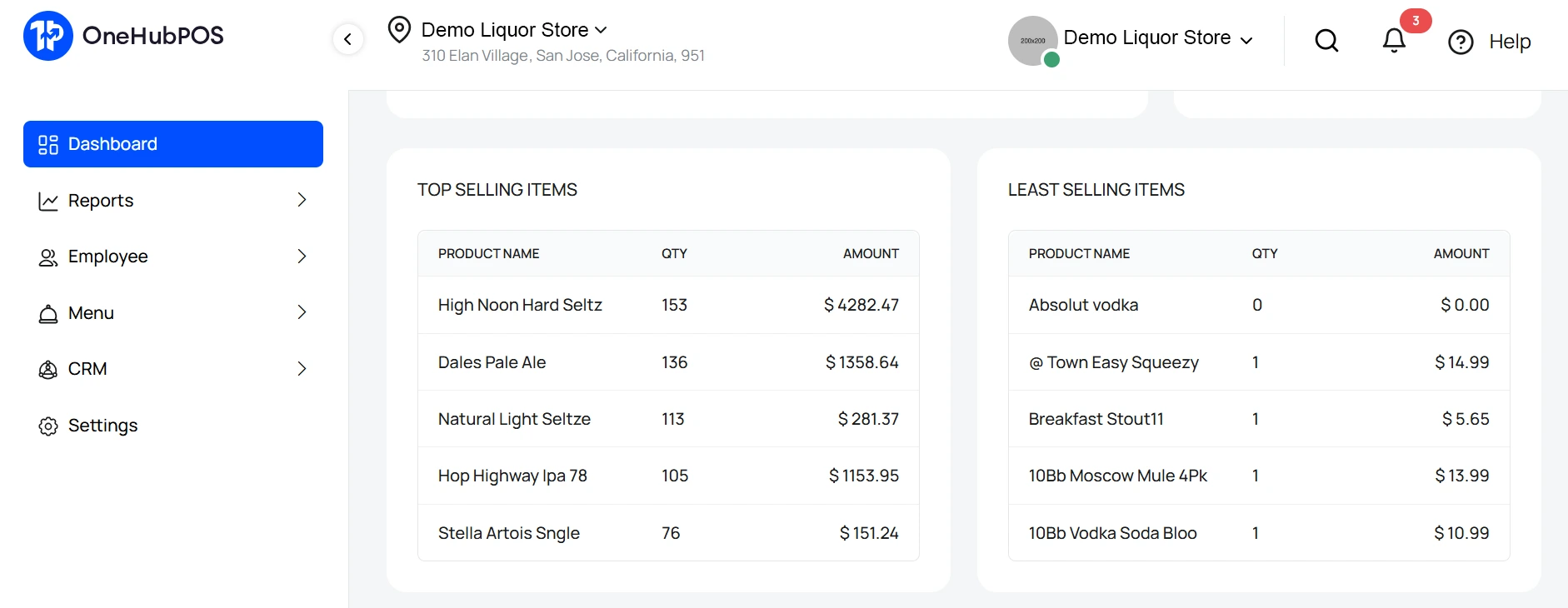
Here’s a checklist of essential features that are table stakes in 2025. If your system is missing any of these, it’s time to reevaluate.
| Feature | Why It Matters |
|---|---|
| Age Verification | Enforces ID checks at the register to ensure compliance with alcohol regulations |
| SKU-Level Inventory | Tracks every product variant accurately across all locations in real time |
| Vendor Compliance Tools | Ensures vendor compliance and unlocks rebates on tobacco and lottery products |
| Dual Pricing Support | Applies card surcharges or cash discounts legally and automatically |
| Offline Mode | Keeps your store running even if the internet connection drops |
| Payment Agnostic | Lets you choose your payment provider, keeping your margins protected |
| Barcode Checkout | Ensures quick, accurate scanning of items with automatic tax and SKU mapping, speeding checkout and reducing errors |
| Role-Based Staff Access | Controls who can change prices, issue refunds, or access sensitive data |
| Multi-Counter Setup | Lets multiple registers work in tandem to handle rush hours smoothly without delays or confusion |
| Discount Handling | Enables compliant promotions, custom discounts, and regulated payouts (e.g., lotto) so you can boost sales lawfully |
| Detailed Audit Logs | Creates a clear record of all transactions and overrides, down to the staff level |
| Vendor Management | Organizes suppliers, links SKUs, and maintains purchase history to improve ordering accuracy and supplier relations |
| Purchase Orders & Inventory Transfers | Automates PO creation and logs stock movements, ensuring inventory integrity and easier restocking |
| Real-Time Reconciliation | Instantly aligns payment and sales data in POS and backend, minimizing accounting discrepancies |
| Hardware Compatibility | Works seamlessly with existing android POS devices, scanners, and printers |
| Sales Dashboards | Provides live sales data on products, categories, and payment types, enabling quick, informed decisions |
| Employee Clock-In/Out | Automates attendance tracking by role to better manage shifts and payroll compliance |
| Access Audit Trails | Keeps a detailed history of user activities for accountability and operational transparency |
| Processor Flexibility | Allows using preferred payment processors without restrictions, protecting margins and future-proofing operations |
Each of these plays a specific role in protecting your bottom line, reducing operational risk, and scaling your business with confidence.
OneHubPOS delivers all of these as standard, supported by a team that understands the operational realities of liquor retail.
Watch Out for These Liquor POS System Deal Breakers
Let’s be honest — choosing a liquor POS system isn’t something you do every day. And yet, it’s one of the most important decisions you’ll make for your business. The right system keeps things running smoothly. The wrong one? It becomes a daily headache you didn’t sign up for.

We’ve seen it too many times: liquor store owners get locked into shiny systems that promise everything but deliver very little where it matters most. Slow checkouts, surprise processing fees, staff with too much access, or worse — you’re stuck calling support every other day just to fix basic stuff.
The truth is, not every POS is built for liquor. You need something that understands your inventory, your compliance needs, your pace — and doesn’t make running your store harder than it has to be.
Learn from common mistakes and avoid these traps:
| The Problem | What You Need Instead |
|---|---|
| Too much tech hassle | A POS that just works — so you can focus on sales |
| Locked into high processing fees | Freedom to choose your payment processor |
| Staff can access everything | Role-based controls to prevent errors & theft |
| No real-time store sync | Cloud POS with multi-store visibility |
| Manual tax handling | Automated, audit-ready tax settings |
| Generic systems designed for everyone but built for no one | Look for solutions designed with liquor in mind, not generic retail |
Must-Have Features in a Liquor POS System That Give You a Competitive Edge
The best liquor stores don’t just survive. They grow, stay profitable, and win customer loyalty by using tools that actually understand their business. A basic POS might get the job done, but a modern liquor POS system does a lot more than just process payments.
It helps you stay compliant. It keeps your inventory tight. It reduces theft and mistakes. And it makes sure you’re not losing money during your busiest hours.
In fact, liquor stores that switch to a POS designed for alcohol retail see up to 23% improvement in inventory accuracy and a 15% reduction in shrinkage within just three months.
This isn’t about fancy features. It’s about smarter operations, better margins, and finally getting a system that works the way your store runs.
The best stores don’t just survive—they thrive because they lean into advanced POS tools designed for liquor retail:
- Live Dashboards with Cloud POS System Access: Keep an eye on sales, staff actions, and key numbers in real time — even if you're off-site.
- POS Inventory Management with Centralized Catalog: Update a product once and it reflects everywhere. No double entry, no mistakes.
- POS Shift Reporting & Close Automation: Your team gets end-of-day summaries and reports without manual work.
- QuickBooks Integration for POS Systems: Sales and tax data go straight into your books — no more late-night spreadsheets.
- Scalable Cloud POS System with Modular Design: Add features or scale to more stores as you grow, without changing hardware or starting over.
OneHubPOS is designed for this new era—born in the cloud, modular, and always audit-ready.
Implementation: It Should Be Fast, Not Frustrating
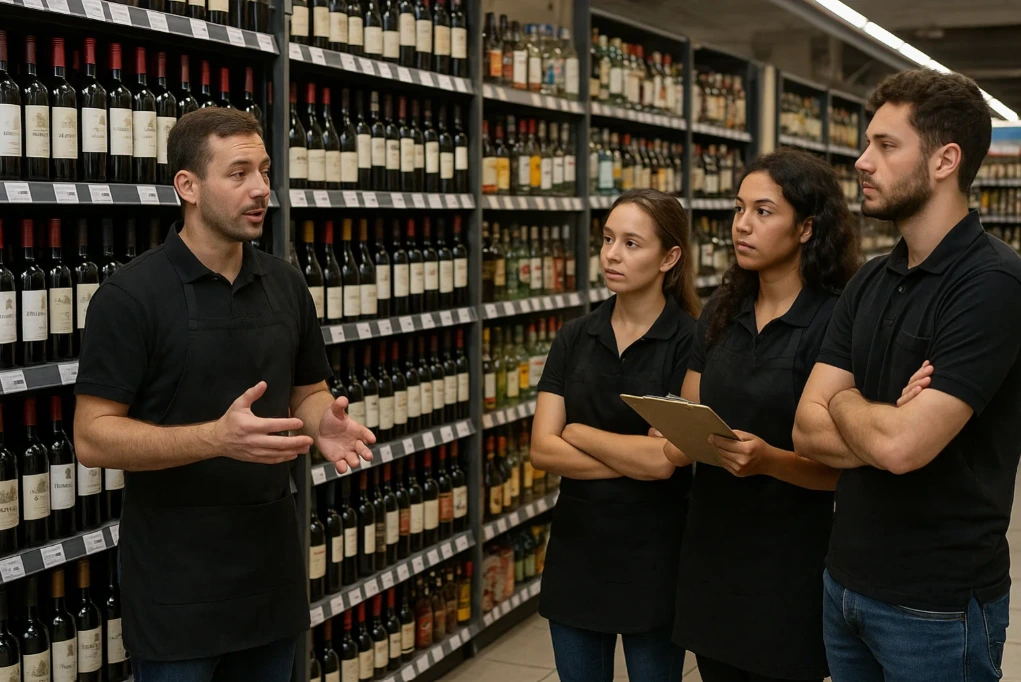
Modern POS deployments can go live in days—not weeks or months. The difference? White-glove onboarding and migration support:
- Staff Training & White-Glove Support: OneHubPOS is noted for deep onboarding, hands-on setup, and real-time guidance until your team is comfortable.
- Data Import Tools: Seamlessly migrate products, pricing, and customer data from legacy systems.
- No Long-Term Contracts: No Long-Term Contracts: You shouldn’t be penalized for outgrowing your provider.
- Migration Tools for Legacy Systems: Supported by cloud-driven software that can adapt, import and run on virtually any hardware, including Android-based POS devices and classic POS printers.
Ask each provider to walk you step-by-step through your first 30 days. If they can’t or won’t explain simply, beware.
Partner-Focused or Just a Vendor?
The liquor business isn’t generic retail. It’s regulated, fast-moving, and unforgiving when compliance is missed or systems fail. A POS provider should do more than tick boxes — they should help you navigate what’s next.

Here’s what to look for in a true partner:
- Deep Understanding of Liquor Regulations
You need a platform designed for regulated retail, not one retrofitted for it. OneHubPOS is built with compliance at its core — from ID verification to ScanData and tax automation — because we know what’s at stake. - Real, Human Support When It Counts
When something’s not working, you don’t have time to file tickets and wait. You need responsive help from people who understand your setup, your workflow, and your urgency. That’s what our support team delivers. - A Product Roadmap That Reflects Your Business
Too many POS systems evolve for coffee shops or clothing boutiques. At OneHubPOS, we build for liquor stores — investing in features like mobile checkout, chain-wide reporting, automation, and integrations that actually matter to you.
Because choosing a POS isn’t just about what works today. It’s about what still works when you open your fifth store, take on new regulations, or upgrade your back office.
TL;DR: The Liquor Store POS Buyer’s Mini-Checklist
- Cash discounting and surcharge rules built in
- Age verification (ID scan prompt)
- Inventory + Audit Logs
- Processor flexibility — no lock-in
- Role-based permissions
- Works with existing hardware
- Cloud-based with offline mode
- Chain-ready: supports multiple locations
- Drawer reports and shift summaries
- QuickBooks, ScanData, and accounting integrations
Final Word: Your POS Should Work as Hard as You Do
Running a liquor store in 2025 is about more than ringing up bottles. It’s an industry where regulations change fast, margins are always under attack, and time is your most precious asset. Don’t let outdated, “generic” tech hold you back.
Future-ready systems like OneHubPOS don’t just help you stay compliant — they give you full control over how your store operates, scales, and succeeds. You get centralized management, top-tier regulatory-ready tools, and total pricing transparency—so you can focus on building a business that lasts.
Ready to move ahead? Explore OneHubPOS, purpose-built for regulated retail. Book a free demo walkthrough and see how you can run your business faster, smarter, and more profitably.
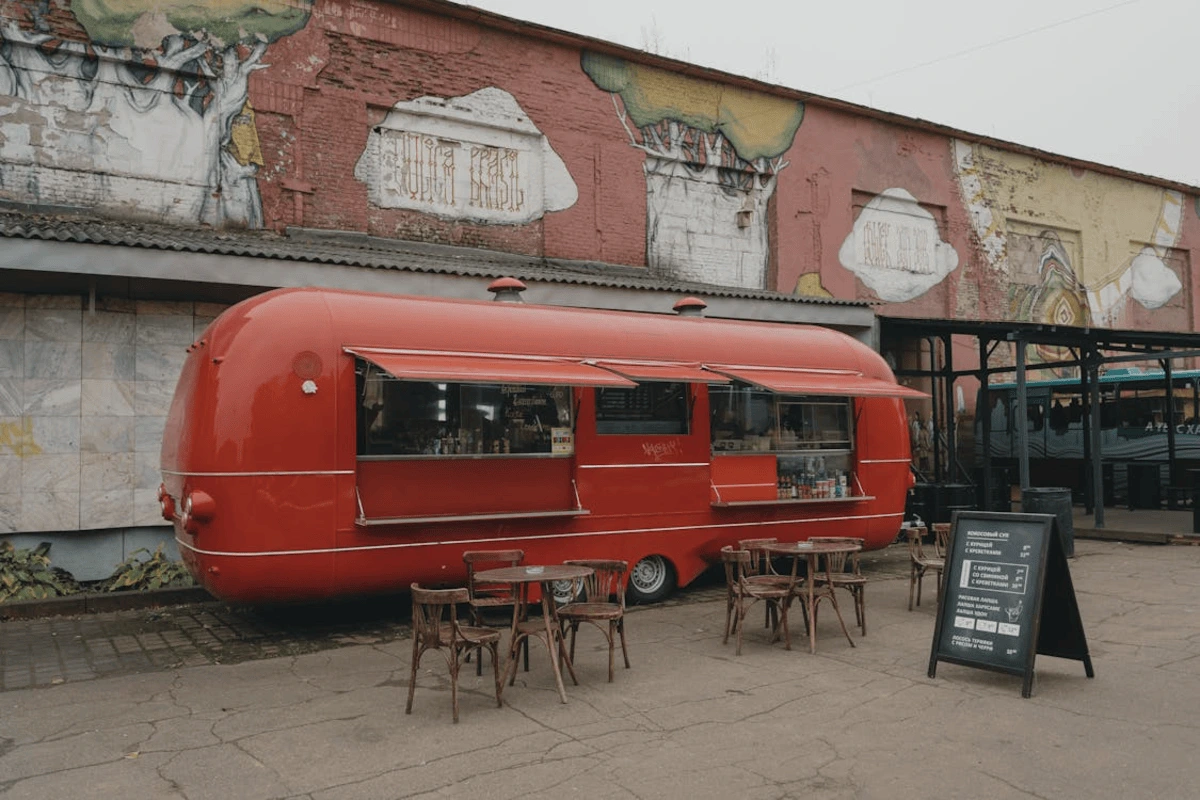

5 min read
Ever wondered why some cities are booming with bustling food trucks while others barely have any?
If you’ve strolled through Portland or Denver, you’ve likely seen a line of food trucks serving gourmet tacos, Korean BBQ, or artisan coffee. But try doing the same in Boston or San Francisco, and you’ll quickly realize it’s not that simple.
So what’s driving this difference?
The Food Truck Nation Index is a data-driven measure that ranks U.S. cities on how easy or hard it is to start and run a food truck. Created by the U.S. Chamber of Commerce Foundation in partnership with NDP Analytics, this index gets deep into the rules, red tape, and real-world challenges that mobile food entrepreneurs face.
In this blog, we’ll break down what exactly the Food Truck Nation Index is and how it’s calculated. We'll also find out what the rankings reveal about doing business from a truck. Let's get started!
Where Did the Food Truck Nation Index Come From?
You may find the modern food truck wave trendy and new. But do you know that mobile food vending in America actually dates back centuries? Think chuckwagons in the Wild West or hot dog carts on busy city streets.
But the gourmet food truck boom, as you know it, really took off in the late 2000s.
Roy Choi’s iconic Kogi Korean BBQ truck in Los Angeles used social media to draw crowds to fresh, fusion-style tacos. Kogi’s runaway success inspired thousands of entrepreneurs to start food trucks. That was the spark!
Fast forward to 2018: recognizing how popular and impactful this industry had become, the U.S. Chamber Foundation launched the Food Truck Nation report. The goal = spotlighting the local rules and policies that either help or hinder food truck businesses.
What Exactly Is the Food Truck Nation Index?
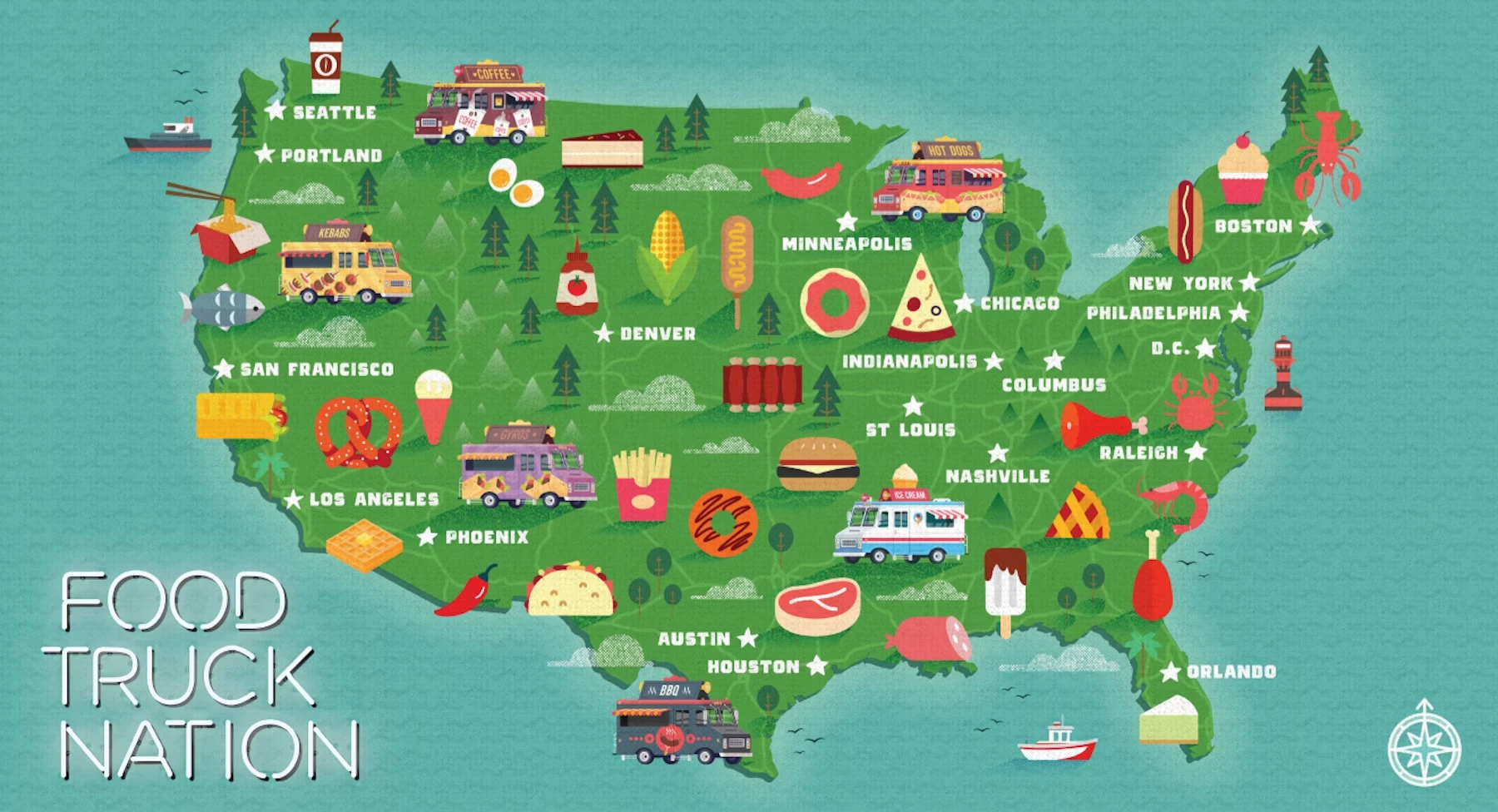
The Food Truck Nation Index is a comprehensive scorecard that ranks 20 major U.S. cities on how friendly or unfriendly they are to food trucks.
This list is based on real numbers. After all, it measures the hidden costs and complex regulatory journey food truck owners must go through, from licensing and permits to how far they must park from brick-and-mortar restaurants. Relying on POS reports instead of guesswork helps truck owners plan for hidden city costs.
In short, the Index shows how much:
- time
- money
- hassle
… it takes to open and operate a food truck in each city.
Why Does the Food Truck Nation Index Exist?
It was designed to:
- Highlight regulatory burdens so that local governments can see how their policies stack up
- Give entrepreneurs insight into where they might have a smoother ride
- Spark reform by encouraging cities to cut unnecessary red tape and support small businesses.
Simply put, the Food Truck Index is a simple, relatable way to understand “how much friction your local government adds to your entrepreneurial dreams.”
How Is the Food Truck Nation Index Calculated?
Building this index pulls together hundreds of data points from city laws, health codes, permit requirements, fees, and even real-world interviews with vendors.
Here’s how it works:
Step 1: Three Key Categories
The U.S. Chamber Foundation and NDP Analytics divided the regulatory burdens into three core areas:
Getting Started (Entry)

How difficult is it to launch a food truck? This looks at:
- the number of steps
- permits and licenses you need
- how long it takes to get started
- how much you’ll pay in upfront fees
Operations (Restrictions)
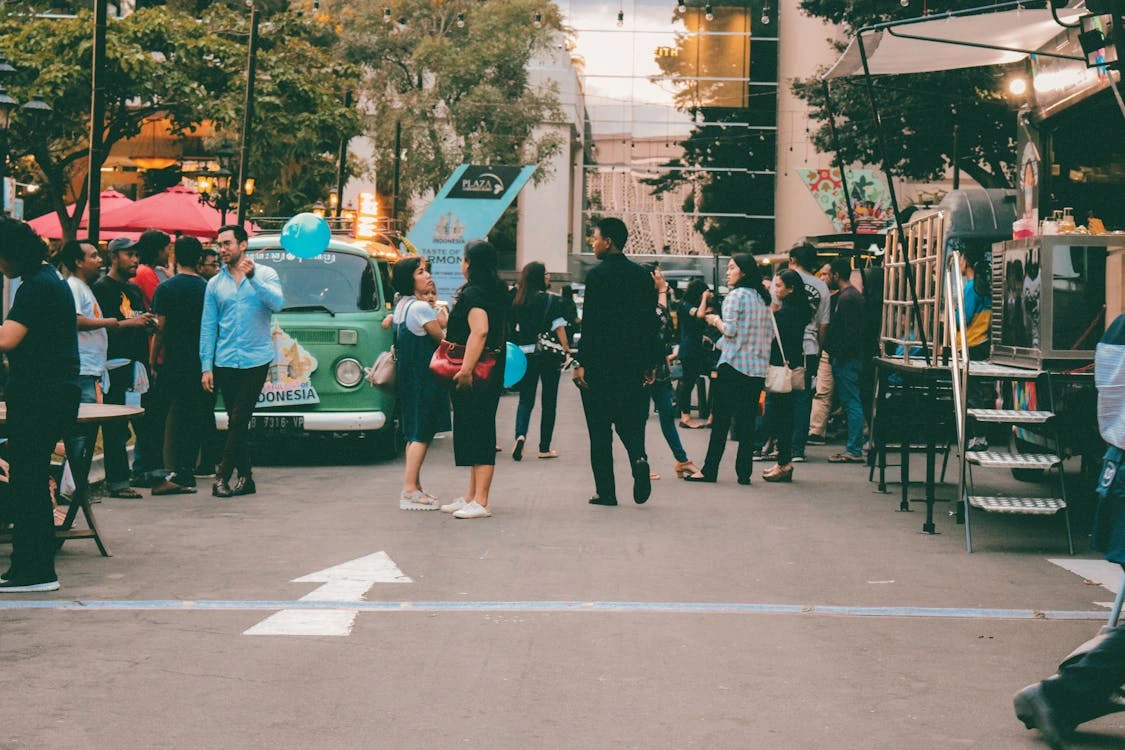
Once you’re on the road, what rules control where and when you can sell? Cities often limit:
- how close you can park to restaurants,
- how long you can stay in one spot
- what neighborhoods you can enter
These location and operation restrictions have a big impact on making a profitable kitchen. In competitive cities, some trucks use dynamic pricing to balance demand and operating limits.
Staying Open (Compliance Costs)
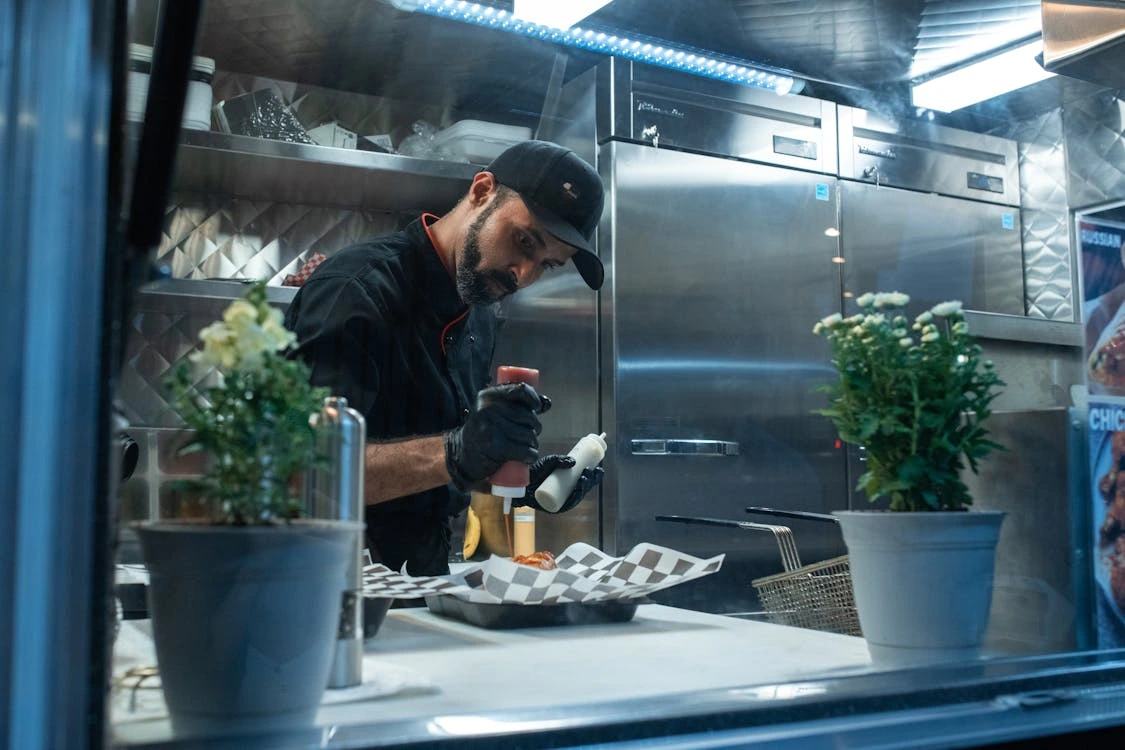
What does it cost each year to stay compliant? This includes:
- annual permit renewals
- required inspections
- any other recurring fees that come with keeping your business legal
Step 2: Gathering the Data

The researchers built a model truck:
- $250,000 annual revenue
- $150,000 in wages
- 3 full-time staff
Then, they calculated what it would take to run this model truck in each city:
- How many government offices do you have to visit?
- How much does each permit cost?
- How long does it take to get approved?
- What are the annual compliance expenses?
This method ensured the theoretical comparison was grounded in what a real food truck would face.
Step 3: Creating the Scores
Each city got a score for each category:
- Permitting: Total steps and time required
- Restrictions: How restrictive local rules are on locations and hours
- Costs: Annual compliance costs
Then, they combined these into an overall Food Truck Friendliness Score for each city.
A higher score means a friendlier city. A lower score? You’ll be dealing with more hurdles.
What Do the Rankings Show?
The findings are eye-opening. According to the Food Truck Nation report, the average food truck must complete 45 separate government procedures, takes about 37 business days to get running, and spends roughly $28,276 annually just to stay compliant. Getting your cash flow right is critical when so much money goes toward permits and renewals.
There’s huge variation city to city. Some places are genuinely welcoming to food trucks. But others make it feel almost impossible.
Top 5 Most Friendly Cities
- Portland
- Denver
- Orlando
- Philadelphia
- Indianapolis
5 Most Difficult Cities
- Boston
- Washington, D.C.
- San Francisco
- Minneapolis
- Seattle
Take Boston, for example. A vendor there must go through over many steps and pay nearly $38,000 per year in compliance costs. But if you compare that to Denver, you'll come to know that it’s way fewer steps and much lower fees.
With so much red tape to tackle, using the best food truck POS system can make day-to-day operations smoother and save precious time. Even in cities with hurdles, smart owners turn downtime into growth time.
Why Are These Differences So Big?
Many cities have outdated rules originally designed for pushcarts and sidewalk vendors. They don't suit modern food trucks with high-quality kitchens.
For example, some cities limit where food trucks can park. This forces them to stay a certain distance from brick-and-mortar restaurants. Some others cap how many vendors can operate in a neighborhood or impose burdensome parking time limits.
Does the Index Matter?
Absolutely. Here’s why:
- For entrepreneurs, the Index is a reality check. It can help you pick the right city, or prepare for the challenges in yours, along with coming up with growth strategies.
- For policymakers, it’s a benchmarking tool. Cities can see how they compare and where they need to cut back on red tape to support small businesses.
- For customers, it matters too! More food trucks mean more dining options, more local jobs, and more vibrant neighborhoods.
Wrapping Up
The Food Truck Nation Index, created by the U.S. Chamber of Commerce Foundation and NDP Analytics, ranks U.S. cities on how easy or hard it is to open and run a food truck. It measures three big factors:
- How complex it is to get started (permits, fees, and steps)
- Operating restrictions (like parking rules)
- Yearly compliance costs
Researchers calculate scores using real data and a model truck’s expenses. The Index reveals huge differences: cities like Portland and Denver are food-truck friendly, while Boston and San Francisco pile on red tape.
So, the Food Truck Nation Index is a lens on how well cities support everyday entrepreneurs. It measures the friction. It encourages change. And it helps ensure that our streets stay lively, diverse, and delicious.
Whether you’re in a friendly or tough city, having a POS truck helps you serve customers quickly and manage costs better. Ready to see how it works for your truck? Book a OneHubPOS demo today!
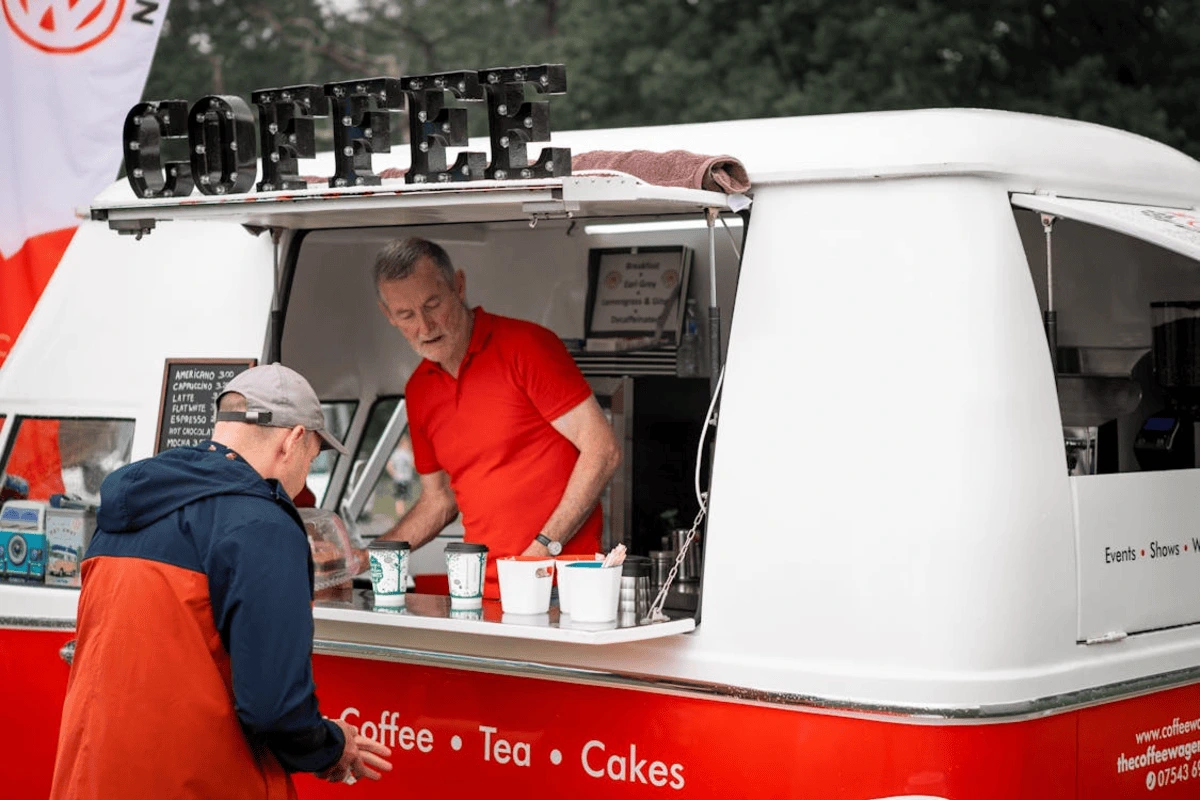

5 min read
Biggest rule before you start a food truck business, you must know this fact: the city you choose is just as important as your recipes.
Pick a place with hungry crowds, food truck-friendly laws, and year-round foot traffic, and you’re set to thrive. Park in the wrong spot? You’ll be fighting for scraps and spending more time hunting for parking than making sales.
In this quick guide, you’ll get the Top 10 best US cities for food trucks. Let's go!
Top 10 US Cities to Start a Food Truck (and What to Watch Out For)
Ready to see where your wheels could take you? Let’s dig into the best cities, what makes each one promising, and what you need to be cautious about when you start a food truck business.
Austin, Texas - A food truck paradise
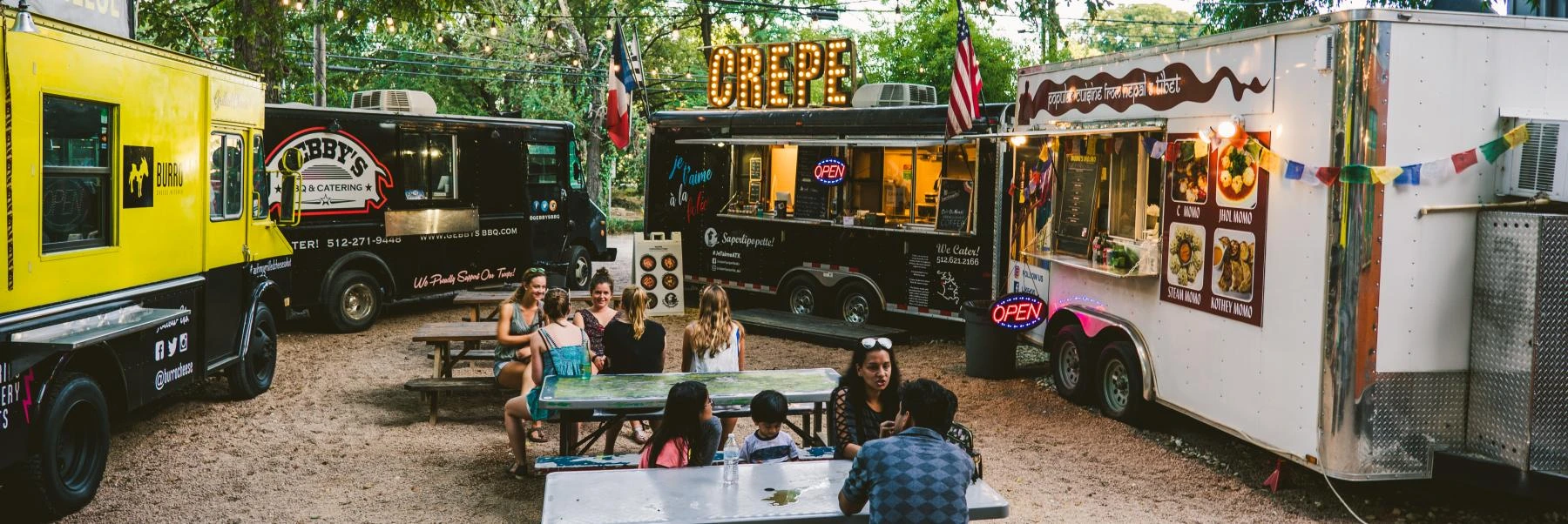
The Live Music Capital of the World isn’t just for guitar lovers.
Think SXSW crowds, ACL (Austin City Limits), and Pecan Street Festival. College students, hungry office workers, and festival-goers keep the lines steady. Legendary food truck spots like The Picnic, Rainey Street, and South Congress make it easier to find consistent foot traffic.
Pro-tip for POS owners: Use dynamic pricing to modulate pricings and offers–and earn more. mPOS or Kiosk would be a perfect addition to keep up with long lines and rush hours.
Look out for:
- Austin’s popular for a reason: over 1,000 trucks call it home. So, fierce competition.
- City permit fees can run $400–$1,000+ a year. Factor that in when you budget.
- Summers often exceed 100°F. Refrigeration + POS with outdoor-proof hardware is key.
Portland, Oregon - Enjoy food cart pods
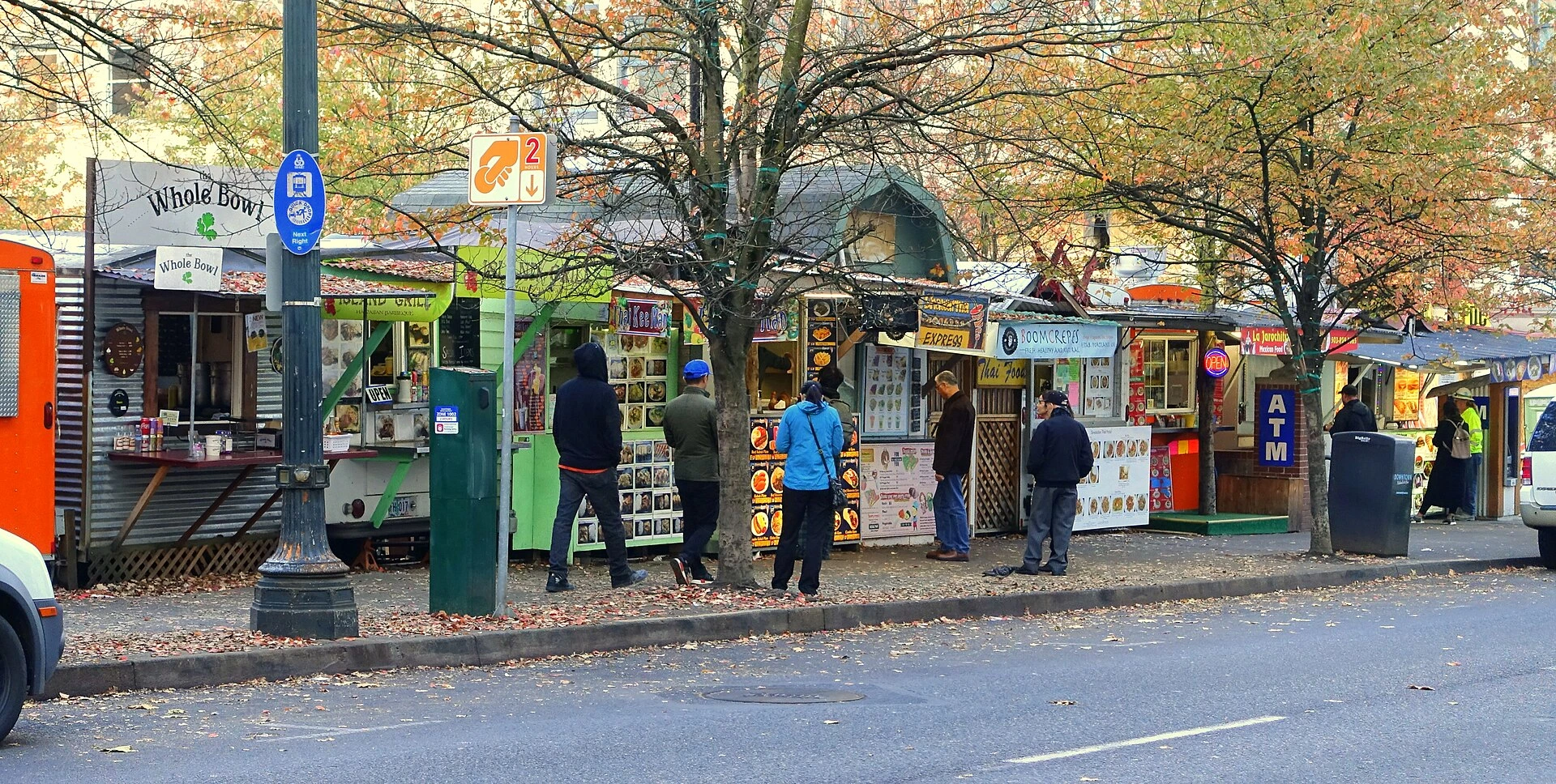
Check out food cart pods like Cartopia, Hawthorne Asylum, and the 5th Avenue Food Cart Pod–all magnets for the lunch crowd. Moreover, locals genuinely love supporting indie food businesses.
Just look at Lardo, Nong’s Khao Man Gai, and Kim Jong Grillin’. All started small and grew thanks to loyal neighborhood fans. Plus, your startup costs here can be lower than in giant cities like LA or NYC.
Look out for:
- Weather: 155+ rainy days/year; affects foot traffic. A POS with offline mode keeps you selling even when WiFi cuts out.
- Pod rents: ~$600–$1,200/month (depends on location and amenities)
- Operating Rules: Must follow DEQ waste disposal guidelines and Oregon Food Code (Mobile Unit Guidebook, 2024)
Denver, Colorado - Join the city’s vibrant food culture

This craft beer capital has a booming brewery scene and young professional crowd. Breweries, summer fests like Denver Burger Battle, and markets like Denver Bazaar mean there’s always something happening outside. Young professionals and locals love eating outdoors. Perfect for your truck.
Look out for:
- Snows in Oct–April; trucks need off-season strategies
- State, county, AND city licenses needed – can take 6+ weeks
- Limited downtown vending hours in LoDo or Capitol Hill due to congestion rules
Pro-tip: Plan for snowy winters. You might need to pause or scale back. Since you'll be operating for a relatively limited time, offer a loyalty program through your food truck POS to bring back regulars, especially if you’re parked near breweries or office hubs.
Los Angeles, California - A massive modern food truck scene
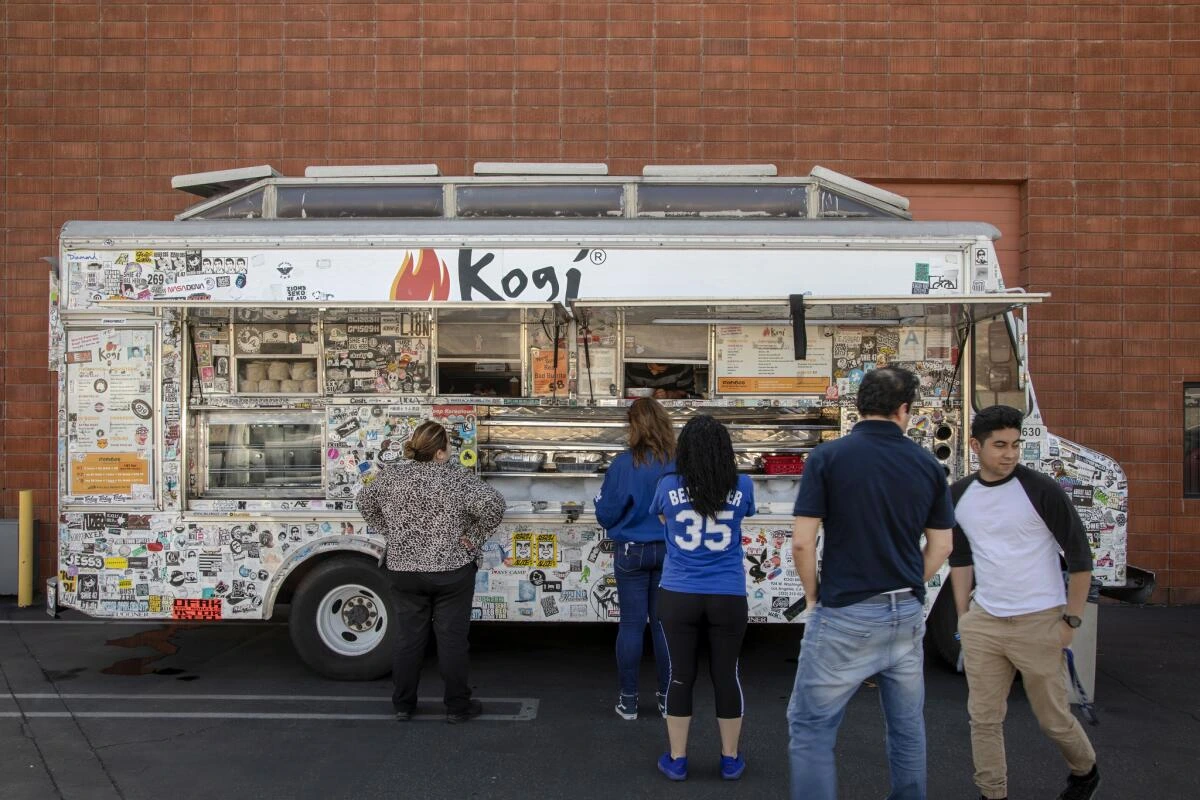
LA practically invented the modern food truck boom. Remember, Kogi BBQ?
A massive, diverse population plus film shoots and events like Downtown LA Art Walk and Venice First Fridays mean a big opportunity for bold, creative menus.
Having said that, competition is next-level here. Plus, parking can be a real headache thanks to strict street vending zones, limited curb space in busy areas like Silver Lake and Echo Park, and rules about staying a certain distance from brick-and-mortar restaurants. So, check the LA Street Vending Ordinance before you roll in.
Pro-tip: Use menu engineering and best-seller reports in your POS. They’ll help you stand out when ten taco trucks line the same block.
Look out for:
- Street vending laws: LA Street Vending Ordinance restricts parking within 500 ft of a brick-and-mortar restaurant
- Curb space battles: Competition for premium spots like Abbot Kinney or Echo Park
- Health grading system: Like restaurants, trucks get public letter grades — A/B/C based on inspection (must display)
San Diego, California - Coastal haven for food trucks

Year-round sunshine and a massive tourist scene make San Diego a coastal haven for food trucks. Beachgoers at spots like Pacific Beach, Mission Beach, and the Embarcadero Marina Park keep foot traffic steady, along with college students and busy downtown workers.
But scoring prime coastal spots like La Jolla Shores or Coronado Beach can be tough. Why? Because competition is high and some areas fall under California Coastal Commission rules, which often require special permits. So, research carefully and lock in your locations early to stay ahead.
Pro-tip: Contactless payments and mobile ordering are lifesavers here. No one wants to dig through beach bags or pull out a soggy wallet. Make it easy, and people will happily order that extra smoothie while they’re still lounging in the sun.
Look out for:
- Coastal Permits: Areas near the coast need Coastal Commission permits — hard to get
- Zoning Restrictions: Not all beach areas are food truck-friendly (check SD Zoning Map)
- Events-Based Revenue: Many successful trucks rely on festivals or private catering gigs
Nashville, Tennessee - City of music + food trucks

Music City is booming with tourists and has a great food truck scene, especially around outdoor concerts at places like Ascend Amphitheater, big downtown festivals, and events on Broadway or near Vanderbilt University.
Note that winters in Nashville can be chilly enough to keep people indoors. So, fewer crowds wandering up to your truck. Plus, the city’s buzz depends a lot on big concerts and festivals. So, some weekends will be packed. But others can feel slow if no shows are on.
Look out for:
- Seasonality: Winter can reduce outdoor activity — need event-based bookings or winter menus
- Permit backlog: Only ~40 street food vending permits issued per year in some zones (Metro Nashville Code)
- Health Standards: Trucks must return to commissaries daily — critical when planning logistics
Raleigh-Durham, North Carolina - Be a part of Food Truck Rodeos

This booming region is home to big universities like Duke, UNC Chapel Hill, and NC State, plus tech hubs like Research Triangle Park, Red Hat, and IBM. So, a steady stream of hungry students and office workers!
The community even hosts regular Food Truck Rodeos. These are big events where dozens of trucks gather in places like Durham Central Park for crowds to sample them all in one spot.
But spots near popular campuses like Franklin Street in Chapel Hill, Hillsborough Street by NC State, or downtown Durham can get fiercely competitive. Plus, some neighborhoods have strict parking rules, so always double-check local ordinances before you start. Plus, some areas have parking restrictions you’ll want to check before committing.
Look out for:
- Campus Restrictions: Duke and UNC restrict food truck parking unless pre-approved
- Strict zoning laws: Durham’s Unified Development Ordinance (UDO) limits hours and distance from homes
- Event Dependency: Rodeos are high-traffic but happen only ~5–6 times a year
Houston, Texas - Land of global fusion trucks

Houston’s population is huge and incredibly diverse. Doesn't this sound like a dream if you want to try unique global fusions? Of course, it does! The city’s brewery scene is also growing fast. Plus, big parking lots mean trucks can flourish if they build good partnerships.
Considering that Houston is sprawling, you may experience higher fuel costs and more time driving between prime spots. Without careful route planning, you could eat up your profits on gas alone.
Look out for:
- Sprawl: You’ll need to drive more — average commute time between busy areas = 35+ mins
- High gas + tolls: Plan your locations to reduce gas costs
- Rainy Season Flooding: Hurricane-prone season (June–Nov) affects operations; prep backup indoor gigs
Seattle, Washington - A growing food truck scene
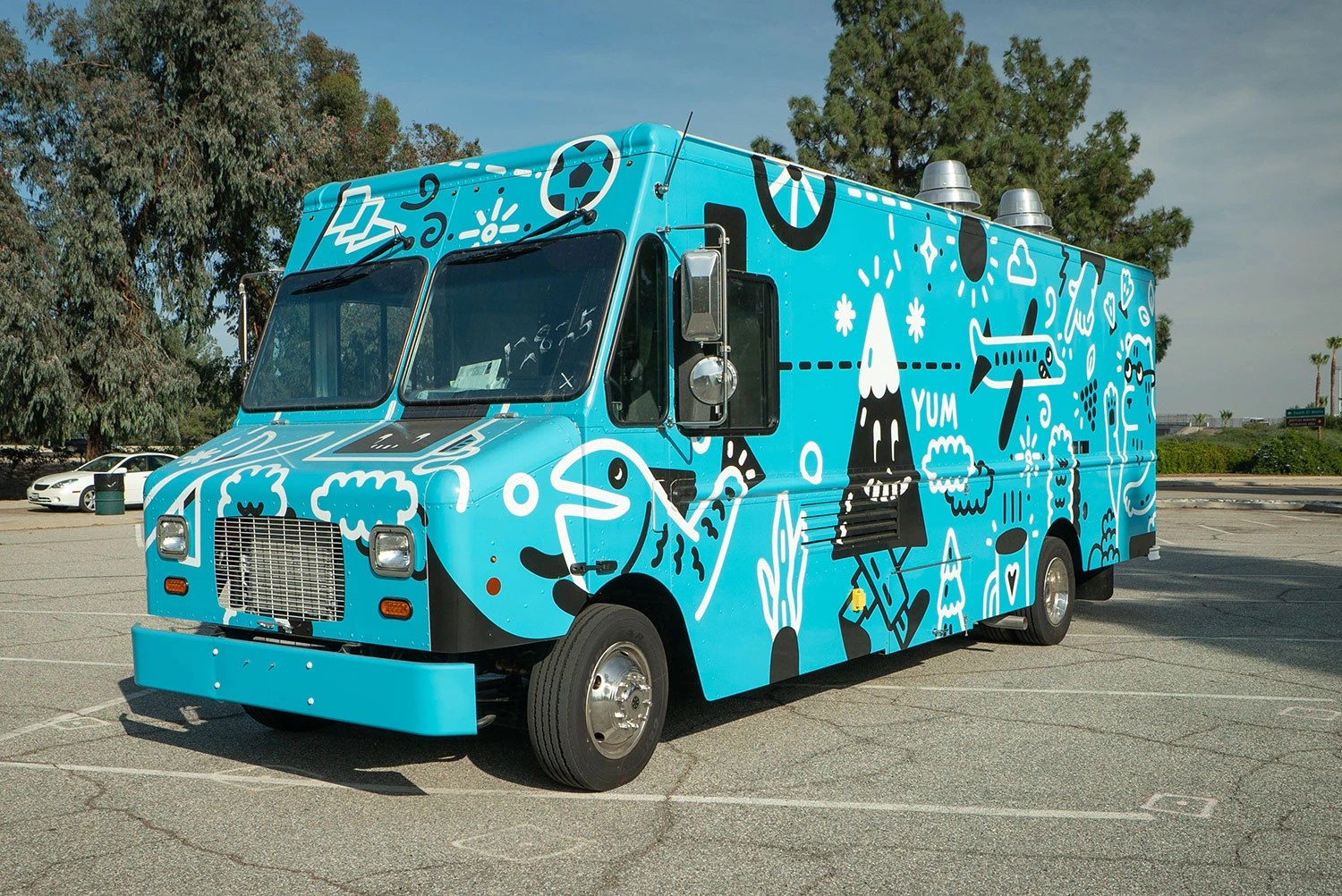
Tech companies, wealthy professionals, and an adventurous foodie scene make Seattle a strong contender for a truck with gourmet options. There’s also a growing event catering market here.
It’s no secret: it rains a lot! Be ready for seasonal dips and research which parking zones have the best foot traffic. Also, some areas are pretty restrictive about where trucks can park, so do your homework.
Look out for:
- Rain (155+ days/year): Plan tent setups and POS with offline backup
- Restrictive Zones: Downtown Seattle and Belltown have limited truck access
- Wastewater Management: City has strict greywater disposal laws
Orlando, Florida - Home to Food Truck Nation!
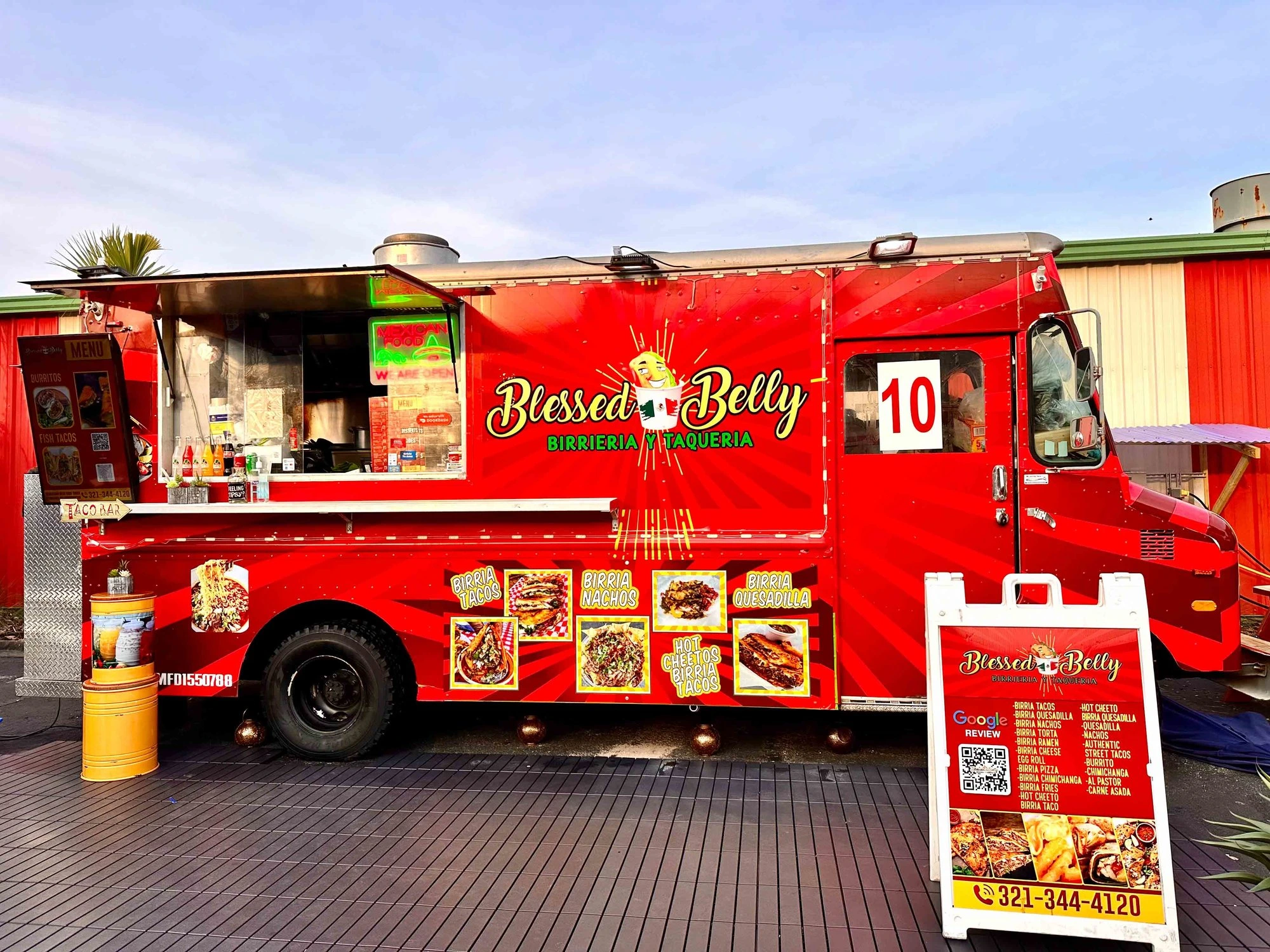
Home to theme parks, conventions, and massive tourist traffic, Orlando offers you a huge seasonal crowd hungry for fun food options. Plus, the weather is food-truck-friendly most of the year.
But you may not find one single “daily” spot that works year-round. Many trucks here rely on catering gigs and festivals to hit their numbers. So, choose a flexible POS that makes it easy to handle both event catering orders and your daily menu management.
Look out for:
- Transient Audiences: Fewer loyal daily regulars, more tourist-dependent sales
- Summer Humidity: Affects equipment, refrigeration, and food quality
- Licensing Complexities: Florida requires a state-level DBPR mobile food license + local health inspections
Keep Your Food Truck Going with OneHubPOS
Whether you’re parking under Austin’s festival lights or rolling up to a Seattle tech campus, the winning combo is simple: right city + smart operations = a food truck that flourishes. Be prepared - check out this article on weather condition and food truck sales by Food Truck Nation CEO, Nadeem Battla.
The best food truck POS systems make all the difference when you’re juggling orders, loyal customers, mobile payments, and surprise rush hours.
OneHubPOS is built to help you do everything, from menu engineering to dynamic pricing and contactless payments that keep your line moving fast.
Ready to serve more and earn more? Book a OneHubPOS demo today and let’s get your food truck running profitably, wherever you park!


5 min read
You’ve already poured your money, time, and probably your life savings into making your restaurant real. The last thing you want is to watch it all get eaten up by fines, surprise audits, or penalties… just because you didn’t set up your restaurant sales tax correctly.
Not to mention the trust you could lose if your customers spot mistakes on their checks.
In this blog, we’ll explore how to set up different sales taxes for your restaurants across the country—and manage them easily on a single cloud dashboard.
Restaurant Sales Tax Varies by State (and Why It Matters)

Restaurant sales tax is a small percentage your restaurant charges your customers on top of the cost of their meal when they order and pay. But you don’t keep this money. Every month or quarter, depending on where you are, you hand it over to the tax authorities.
But what if you go wrong with restaurant sales tax and don’t collect enough? Sadly, you’ll still owe the difference. Out of your pocket. Therefore, guessing isn’t an option if you want to stay compliant and keep your restaurant profitable.
So, is there sales tax on restaurant food in the U.S.? Well… yes. In restaurants, you almost always have to charge sales tax on food and drinks. Some states have different rules for alcohol or catering. But in most cases, if you’re handing someone prepared food, you’re collecting tax.
Sounds simple, right? Well… sort of. However, the real difficulty is how wildly the rates can change depending on where you operate. Unlike other countries with a single VAT or GST, the U.S. has no federal sales tax. Instead, the sales tax rate varies with the place. So, this difficulty becomes a pain point when you're not using a reliable POS system.
Restaurant Sales Tax
So when you open your café, diner, or burger joint, you can’t just Google “average sales tax” and put it on your receipts. You have to know your exact state rate, plus any local or special meal taxes that apply to you.
Miss it, and you could undercharge and owe thousands later or overcharge and end up refunding frustrated customers!
Here are some examples to understand how sales tax works in the U.S.:
States with No Statewide Sales Tax
Oregon, Montana, and New Hampshire don’t collect statewide sales tax at all. But local options can still pop up. For example, parts of Montana have local “resort” or “tourist” taxes up to 3%–5% on prepared food.
New Hampshire doesn’t have a general sales tax. But it does have a 9% Meals and Rentals Tax on restaurants, hotels, and catering.
States with Special Meals Taxes
In Virginia, the base state sales tax is about 4.3%. But cities can add a hefty meals tax, sometimes up to 7%. In Richmond, for example, the combined tax for restaurant meals can reach 11.5%.
In Rhode Island, the base sales tax is 7%. All restaurant meals and beverages carry an additional 1% local meals and beverage tax. That makes your total restaurant tax 8%.
States with High Local Surtaxes
The state tax in Illinois is 6.25% on general goods. But food and drinks for immediate consumption are taxed higher. Plus, cities like Chicago add on a local restaurant tax. The result? A Chicago restaurant often collects around 10.75%–11.75%.
New York City’s base sales tax is 4%. But it adds a local rate plus a Metropolitan Commuter Transportation District (MCTD) surcharge. So, a NYC café or bistro usually collects around 8.875% total.
How to Set Up, Edit, or Remove Sales Tax in Your Restaurant POS
When your restaurant sales tax rates change, your restaurant POS has to be flexible. You should be able to add, edit, or remove tax rates in seconds. No spreadsheet hacks. No manual calculators. The clean, clear tax settings should match your city’s rules so that you don’t wake up to an audit letter down the road.
OneHubPOS makes this part easy: it lets you stack state and local taxes, label them clearly, and tweak them. The whole process is quick, clear, and designed for non-techy folks.
Here’s exactly what you do:
Step 1: Log In

Log in to OneHubPOS using your credentials: your username and password. Once you’re in, you’ll see your dashboard, with various types of quick reports and graphs. This is your command center for… well, everything from sales to staff. All in one spot.

Step 2: Choose Your Restaurant

If you're managing multiple restaurants from a single dashboard of your QSR POS, go to the topmost drop-down icon slightly to the left and click it. You'll see a menu with the names of the places you're managing. Click on the restaurant for which you want to set up the sales tax.
However, if you're not running many places or if your desired location is already chosen, no need to go through this step.
Step 3: Go to Settings

Click on the three-line icon to the left. You’ll see a menu with options like Dashboard, Reports, Employees, Menu, and Product Setup. Go all the way down. You’ll see Settings at the bottom. Click that. It’s where you manage restaurant tax rates, discounts, role-based access, and many more aspects of restaurant operations.
Step 4: Click Taxes

Inside your Settings, you'll see sections like Discount, Taxes, Modifiers, Tippings, Terminal, and so on. Click on Taxes to view your existing restaurant tax rates. If you’re just getting started, this list may be empty.
Step 5: Add, Edit, or Remove
This is where you get to choose what you need to do:
Add a New Tax

- Click Add Tax.
- Give it a clear name, like “NYC Meals Tax” or “Illinois State Tax.”
- Enter the exact percentage your city or state requires.
- Click Save. Done!
Edit an Existing Tax
Always double-check your entered restaurant sales tax rate. So, in case you've entered incorrect rates or if tax laws change, update your POS immediately. It’s way cheaper than paying back taxes + penalties later.

- Next to each tax in your list, you’ll see an Edit button.
- Click it, update the name or percentage, then Save.
Remove a Tax
Maybe your area drops a local meals tax or some other tax.

- Find the tax in the list.
- Click the bin icon, and confirm. Consequently, your POS stops applying that tax on future orders.

Pro-tip: Don’t lump every sale into the same tax bucket. Make special tax categories in your POS, especially if your menu includes taxable and non-taxable items. For example, some states tax catering or alcohol differently.
How It Works Once Sales Tax Is Set Up in Your POS
So what actually happens at the counter once you’ve set up your sales tax? Here’s how it flows:
- Your guest places their order. Maybe a burger, fries, and a soda to go.
- Your staff punch the order into your POS system.
- Instantly, your POS calculates the correct sales tax for that transaction, based on your exact restaurant sales tax rates.
- The customer’s POS receipt clearly shows the subtotal, the tax amount, and the final total. It’s all broken out so there’s no confusion.
- The guest pays via cash, card, or contactless payment. Your POS automatically logs the sale, the tax, and updates your reports behind the scenes.
- The tax portion is tracked separately in your daily sales reports. So when it’s time to file, you know exactly how much you’ve collected and exactly what you owe.
Handle Your Restaurant Sales Tax With OneHubPOS
Ignoring tax paperwork is how a small mistake turns into a big, expensive problem. But now, you know:
- Your state’s rules aren’t the same as your neighbor’s.
- Your city might have its own “bonus” tax just for restaurants.
- Exactly how to set up, edit, or remove your restaurant sales tax in your all-in-one POS—no IT help needed.
So, restaurant sales tax isn’t scary when you’ve got the right system watching your back. OneHubPOS keeps it simple—with a clean dashboard, intuitive settings, and fast updates when your local tax rules change.
Ready to make restaurant sales tax one less thing to worry about? Book your OneHubPOS demo today and see how OneHubPOS helps restaurants like yours stay compliant, confident, and just focused on great service.
.webp)

5 min read
Is your convenience store really convenient if your checkout crashes every time the internet hiccups?
A frozen checkout line can ruin your day—and your customer’s. You run a store built on speed. A dead payment terminal is the last thing you need.
- No Wi-Fi? No card swipes.
- No network? No QR codes.
- No connection? Your POS is practically useless.
That’s why having an offline POS system isn’t optional—it’s essential. It keeps sales moving, customers happy, and your store running, no matter what’s happening with your internet.
This blog explores what an offline POS system does for your convenience store and what the benefits are. Let's get into it.
What Convenience Really Means in Convenience Stores

A gallon of milk before breakfast? Late-night snack run? Emergency batteries when the power goes out? You have it all. Convenience – it’s right there in the name.
Your whole business revolves around making things easy and quick for the customer. You’re the pit stop where people know they can quickly grab what they need and keep moving.
That’s your edge. That’s what your customers love about you.
So, speed is much more than just your biggest selling point. It’s your reputation. It's your promise. But lose that speed, even for a few minutes, that promise of convenience goes out the window. Let it happen often enough, and you lose that reputation.
Even the slightest delay at checkout can have a ripple effect.
- Lines grow longer.
- Tempers get shorter.
- That ‘quick stop’ feeling vanishes.
- Fierce competition. There’s probably another store, gas station, or small shop just down the road. One bad checkout experience = folks go elsewhere
So, when your retail POS system works smoothly, you’re fast, frictionless, and convenient every time.
Why C-Stores Can’t Rely on Connectivity Alone

You probably don’t think much about your internet, until it goes down at the worst moment. What if that moment is when you’ve got a line out the door?
Open All Hours? So Are Tech Glitches.

Is your c-store open 24/7 or at least well into late hours? If yes, suppose you're running a late-night shift. What would you do when your POS goes down and there’s no IT help at that hour? Your cashier would be stuck apologising while customers get annoyed. Manual workarounds? Nobody wants to write orders on paper at midnight.
Tricky Locations = Patchy Internet

Maybe you run a roadside store on the edge of town. A patchy signal is part of daily life. A lot of stores sit in places where getting a stable connection is tough:
- Gas stations on rural highways
- Roadside stops where signals are spotty
- Store basements below street level
- Busy urban corners like corner gas stations or older buildings with thick walls, or maybe overloaded networks
One hiccup and you’re stuck.
Multiple Counters, More Risk

Your store may have multiple registers, self-checkouts, tobacco counters, or lottery stations. Each checkout point needs to run independently. If one goes down because of an outage, that small bottleneck quickly turns into a line that tests everyone’s patience.
Why an Offline POS System Matters for Your Convenience Store
You’ve probably put real effort and money into making your store run smoothly. You’ve got:
- Reliable barcode scanners for fast scans and hence quick checkouts
- Well-trained cashiers who know how to handle rush hours
- Neatly organised counters to keep lines flowing
- Even smartly placed impulse buys and high-margin items around your checkout to boost last-minute sales
All of that is great. But it can’t save you when your internet connection drops dead.
Think about it: if your network fails, it doesn’t matter how fast your scanner is. Your staff can’t process payments, your line keeps growing, and the frustration spreads.

That's when an offline POS system makes sure your efforts don’t get knocked offline when your internet does. You can keep working without the internet:
- You can still ring up sales.
- You can weigh items with the POS scale.
- You can take payments.
- You can print physical receipts or create POS receipts for customers.
Furthermore, the POS stores your transaction data locally. All the sales data, customer info, or payment details are saved securely on the device (tablet, terminal, or server) instead of being sent immediately to the cloud.
When internet is restored, the cloud-based POS “syncs”:
- Once the internet returns, all locally stored data syncs seamlessly to your cloud dashboard.
- This updates your sales reports, inventory, and any other records.
- Any contactless payments that were stored securely get processed with your payment processor.

So, a good offline POS mode works quietly behind the scenes:
- Staff can take orders.
- Customers can still swipe or tap their cards.
- Items keep scanning like nothing happened.
- Transactions are recorded and safely stored.
- Once the connection comes back, everything syncs up automatically.
No lost sales. No angry customers. No staff struggling to figure out handwritten receipts.
6 Key Benefits of Offline POS Mode for Convenience Stores
Here’s what an offline POS system really does for you:
Keeps Lines Moving During Peak Hours

Morning rush for breakfast and coffee? Afternoon snack runs? Friday nights when people stop in for drinks and last-minute party stuff?
These busy times are exactly when you cannot afford an outage. Offline mode makes sure that even if your connection cuts out, your lines don’t freeze up.
Customers won’t even notice something went wrong. They’re in, out, and on their way. Just how they like it!
Prevents Lost Sales

When your system’s down, customers might stick around for a few minutes. But most people don’t have that kind of patience. They’ll abandon their basket, walk out, and you lose that sale.
But an offline POS system keeps the money coming in, no matter what your internet is doing.
Protects Customer Trust

Convenience store loyalty is built on trust.
When customers know they can rely on you for a quick stop every time, they’ll keep coming back.
One bad experience at checkout? People remember. But an offline POS system helps you avoid being “that store” with constant “system down” excuses.
Staff Stays Calm and Productive

When the POS freezes, your staff feels the heat immediately. They have to break the bad news to customers. They scramble for manual workarounds. That kind of stress? Unnecessary and avoidable.
But with offline mode, your cashiers can keep working like normal. No panic, no long lines, no awkward apologies.
Happy staff = happy customers.
Secures Your Sales Data

Worried about losing all those offline transactions? The offline mode of the best retail POS system automatically saves everything locally.
When your internet’s back, the system updates your records without an issue. Consequently, your POS reports stay clean and accurate. So, you don’t have to spend hours fixing mistakes later.
Gives You a Real Competitive Edge

Here’s a detail you might not have thought about:
If your store keeps running smoothly during an outage, but the gas station down the road has folks stuck waiting and wasted their time, who do you think those customers will choose next time?
Your store!
People notice who handles hiccups with no chaos. They’ll reward you with repeat visits. After all, you made their day just a little bit easier.
Some Key Questions to Ask a POS Provider About Offline Mode
Once you've decided to go for an offline mode POS, you must ask the following questions from potential POS providers so that you get a system that works as per your needs:
- Does your POS support true offline mode for both cash and card transactions?
- Can staff scan items, take payments, and print receipts in offline mode?
- Is transaction data stored locally on each terminal?
- Do individual registers work independently without a shared server?
- Will registers sync automatically once the connection is restored?
- Is offline functionality included in the standard plan or an upgrade?
- Does offline mode require any additional hardware or storage?
- Do you offer staff training for handling offline scenarios?
OneHubPOS: The “Always On” Checkout You Can Count On
At the end of the day, you know what makes a convenience store truly convenient:
- Speed: Customers want to get what they need, fast.
- Reliability: They trust that you’ll always be ready to serve them, day or night.
- Smooth checkouts: The last thing anyone wants is a checkout line frozen by a Wi-Fi issue.
Your POS keeps track of everything from daily sales to staff shifts and inventory. But none of that matters if your system comes to a halt the moment your Wi-Fi drops. OneHubPOS is built with the unique realities of convenience stores in mind: the odd hours, the patchy spots, the busy weekends.
Don’t let your POS system be your weakest link. Book a demo of OneHubPOS today to see how this offline POS system keeps your sales undisturbed and your customers smiling, even when your Wi-Fi has other plans.


5 min read
Opening your first restaurant? That’s exciting. It can also feel overwhelming. Alongside perfecting your menu and designing the space, you’ve got restaurant compliance to deal with.
If you miss just one permit, inspection, or filing, you could face fines or delays — or worse, a forced closure. But don’t worry. We’re breaking restaurant compliance intricacies down for you. Let’s dive in.
Business License/Registration
Start by deciding your business structure:
- LLC
- partnership
- corporation
- sole proprietorship
Most restaurants don’t need to register federally to form a business. But if you’re starting a restaurant as a corporation, filing for tax-exempt status, or trademarking your restaurant name, register with the IRS or USPTO.

If you formed an LLC or corporation, you must report Beneficial Ownership Info (BOI) to FinCEN via fincen.gov/boi.
Then, register in the state where you conduct business through the Secretary of State. You'll need:
- Business name and address
- Ownership/management info
- Registered agent (required for LLCs, corps, partnerships)
- Type of structure
- Number/value of shares (for corporations)
Common documents:
- LLC: Articles of Organization + Operating Agreement
- Corporation: Articles of Incorporation + Bylaws
- Partnerships: Certificate + Partnership Agreement
Foreign qualification is needed if operating in multiple states. You’ll file a Certificate of Authority and may need a Certificate of Good Standing from your home state.
Some cities/counties require local licenses or DBA registration if using a trade name. Check with your local government.
Federal EIN (Employer Identification Number)

This is like a Social Security number for your restaurant. You can’t run payroll legally without it. You’ll need it to:
- Hire employees
- File business taxes
- Open a bank account
To get it, go to the IRS website, click “Apply for an EIN,” and follow the prompts. It’s free!
Sales Tax Permit/Seller’s Permit

Every state (except a few like Alaska, Delaware, Montana, New Hampshire, and Oregon) requires you to collect sales tax on food and drinks. To do that legally, you need a Sales Tax Permit, also called a Seller’s Permit in some states.
How to get it? Search “[Your State] Sales Tax Permit registration.” You’ll fill out a form online, list your products, and receive a certificate. Some states offer same-day digital approval.
Food Service/Health Permit

Before starting your QSR, you need approval from your County or City Health Department. That means passing inspections, submitting your menu and layout, and proving you're following all health and safety regulations in a restaurant. This includes checks on:
- Equipment setup
- Ventilation
- Food storage
- HACCP plan (Hazard Analysis Critical Control Point)
To get it, visit your local Health Department site and look for “Food Establishment Permit.” You’ll likely need to:
- Submit floor plans
- Provide your menu
- Pass an inspection
Allow 2–4 weeks minimum.
Food Handler Certifications

All team members who handle food — from chefs to servers — must be certified. Uncertified staff can’t work with food. So, they’ll need food safety training. Failure to comply can result in fines.
- Common certification: ServSafe (offered nationwide)
- Deadline: Within 30 days of hire
Go to servsafe.com. Courses cost around $15–$25. Your staff can often complete these courses online in a couple hours.
Building Permits & Inspections
Doing any renovations? Installing new plumbing, HVAC, or a fire suppression system? You need a building permit.
Talk to your city’s Building Department before any work starts. Your contractor will likely pull the permit. But you’re responsible for making sure they do.
Zoning Approval
Some neighborhoods limit what kind of business you can operate or if you can serve alcohol outside.
You need zoning approval for food service, outdoor seating, and liquor sales. Otherwise, you could be barred from opening, fined, or forced to relocate.
Check your local zoning maps and contact your city’s Planning or Zoning Department. They’ll tell you if your site is restaurant-approved or if you need to apply for a zoning variance or hearing.
Fire Department Permit & Inspection
Before opening and often annually after, your local fire marshal will inspect your space for fire safety restaurant compliance.
What they’ll check:
- Fire extinguishers (up-to-date and correctly placed)
- Fire suppression system in hoods
- Sprinklers and alarms
- Occupancy signs and exit routes
What happens if you skip it? You may be shut down. In case of a fire, you could face criminal charges for negligence.
Contact your local Fire Department and schedule a pre-opening inspection. They’ll let you know what’s missing and when to fix it.
Sign Permit
Planning to hang a sign above your entrance? You’ll need to apply for a Sign Permit through your Planning or Zoning Department. Towns have strict rules about size, brightness, and placement.
How to get it? Submit design specs, dimensions, and possibly a rendering of the sign placement. You may also need landlord approval if you’re renting.
Sidewalk/Curb Café or Patio Permit
Want to serve lattes on the sidewalk or host a brunch on the patio? You need a permit for that too. It ensures pedestrian safety, accessibility, and proper use of public space.
Apply through your city’s Zoning or Public Works Department. You’ll usually need:
- A floor plan
- Proof of insurance
- ADA accessibility confirmation
Entertainment/Music License

Want to play music in your restaurant? Whether through speakers, TV, radio, or live performers, you need a public performance license from U.S. performing rights organizations like:
- ASCAP
- BMI
- SESAC
- GMR
Each PRO represents different songwriters. So, most restaurants need licenses from multiple organizations to cover a full playlist.
Hosting live music or DJs? You’ll need a separate license for that too, even if the music is a cover.
Note: Personal streaming services such as Spotify or Apple Music are not legally permitted for business use under copyright law.
State Liquor License

Selling alcohol, even just beer or wine, requires a State Liquor License, issued by your State Alcoholic Beverage Control (ABC) Board. The process is usually lengthy and detailed.
Here’s what you’ll need to submit:
- A detailed floor plan
- Zoning clearance
- Background checks
- Fingerprinting
- Application fees
- Community or public notice (some areas require public hearings)
What happens if you skip it? Serious legal consequences. You could face misdemeanor charges, fines over $1,000, or even jail time. Plus, you risk permanent revocation of any future alcohol rights.
Visit your state’s ABC Board website. Be patient; the process may take anywhere from 2 to 12 months depending on your location and license type. Fees also vary wildly: from $300 to over $250,000 in some cities.
Pro-tip: Use a POS system with built-in age verification to avoid accidental service to minors.
Specialized Requirements
This part depends on how you operate, but don’t skip it just because it sounds “extra.”
FDA Food Facility Registration
Only required if you manufacture, process, pack, or store food for retail sale beyond your premises. So if you’re bottling your hot sauce or selling branded packaged cookies—this applies to you.
Go to the FDA’s Food Facility Registration page. The form is online and free. Renewal is required every two years.
Employment Compliance
Hiring staff? Of course you are. Then you need to be compliant with:
- Form I‑9 to verify employee identity & eligibility to work
- FLSA rules (Fair Labor Standards Act) for minimum wage, overtime, breaks and working hours, and workers’ Compensation Insurance (mandatory in most states)
How to get it:
- Download Form I‑9 from uscis.gov
- Contact your state labor department for wage law guidance
- Purchase workers’ comp through a licensed insurance provider or state-administered fund
Ongoing Compliance & Renewals
Once you’re open, the restaurant compliance journey doesn’t stop.
Renewals & Inspections
Most licenses and permits like health, liquor, building, and signage need to be renewed annually or every few years. Some require scheduled or surprise inspections, especially health and fire.
Record-Keeping
You’re also expected to keep proper documentation on file, such as:
- Health inspection results
- Food temperature logs
- Staff training records
- Alcohol sales and incident logs
- Equipment safety checklists
Set up a secure digital filing system. You can use Google Drive, Dropbox, or an advanced restaurant POS system.
Business Insurance
Most insurers won’t give you coverage unless you’ve already received your:
- Health Permit
- Liquor License (if applicable)
- Certificate of Occupancy
- Fire Department Inspection clearance
Essential coverage includes:
- General Liability for slips, trips, burns, etc.
- Workers’ Compensation for staff injuries
- Liquor Liability if you’re serving alcohol
- Business Interruption for fire, flood, or forced closures
Talk to an insurance broker who specializes in food businesses. Ask about coverage bundles for restaurants and verify state minimums for workers’ comp.
The 2025 Restaurant Compliance Checklist
Business Setup
- Decide your business structure (LLC, Corporation, Partnership, Sole Proprietor)
- Register your business with your Secretary of State
- File necessary documents (Articles of Organization/Incorporation, Agreements)
- Appoint a registered agent (for LLCs, Corps, Partnerships)
- Report Beneficial Ownership Information at fincen.gov/boi
- Register DBA/trade name locally if applicable
- File for foreign qualification if operating in other states
Tax & Legal IDs
- Apply for a Federal EIN from the IRS (required for payroll, taxes, bank account)
- Get a State Sales Tax Permit/Seller’s Permit
Food & Health Compliance
- Apply for Food Service/Health Permit from your local health department
- Submit floor plans, menu, and pass required inspections
- Ensure all staff have food handler certifications (e.g., ServSafe within 30 days of hire)
Construction & Facility Approvals
- Apply for building permits before starting renovations
- Schedule necessary inspections (plumbing, HVAC, fire systems)
Location Approvals
- Confirm zoning approval for restaurant use and outdoor seating
- Apply for zoning variances if needed
Fire Safety
- Schedule Fire Department inspection (extinguishers, exits, hoods, sprinklers)
- Install and maintain required fire safety equipment
Signage & Outdoor Space
- Apply for sign permit (submit design, get landlord approval if needed)
- Apply for patio/sidewalk café permit (floor plan, insurance, ADA access)
Music & Entertainment
- Get music licenses from all required PROs (ASCAP, BMI, SESAC, GMR)
- Apply for a separate license if hosting live music or DJs
- Do not use personal streaming accounts (Spotify, Apple Music, etc.)
Alcohol Sales (if applicable)
- Apply for a State Liquor License through the ABC Board
- Submit floor plan, zoning clearance, fingerprints, background checks
- Publish public notice or attend hearings if required
Packaging & Distribution (if applicable)
- Register with the FDA if bottling, processing, or selling packaged food
- Renew FDA registration every 2 years
Employment Compliance
- Complete Form I‑9 for every new hire
- Follow FLSA wage, hour, and break laws
- Purchase Workers’ Compensation Insurance
Ongoing Restaurant Compliance
- Set reminders for renewing health, liquor, fire, and building permits
- Prepare for surprise inspections (especially health and fire)
Recordkeeping
- Maintain inspection reports, food logs, training records, alcohol log
- Set up a digital filing system (Google Drive, Dropbox, POS tools)
Insurance Coverage
- Get General Liability Insurance
- Get Workers’ Compensation coverage
- Get Liquor Liability Insurance (if serving alcohol)
- Get Business Interruption coverage
OneHubPOS Makes Restaurant Compliance Easier
Running a restaurant is hard. Managing restaurant compliance? Even harder.
But OneHubPOS doesn't just help you take orders or process payments; this all-in-one POS solution also helps you stay compliant:
- Employee Management: Track food handler certifications and renewal deadlines
- Digital Filing: Upload permits, licenses, and inspection logs for easy access
- Daily Operations: Automate checklists for opening/closing duties and health safety
- Sales Reports: Organized for easy tax filing and audits
Let OneHubPOS manage the operational complexity so you can focus on your food, your team, and your guests. Book a demo today and see how simple restaurant compliance can really be with OneHubPOS by your side.


5 min read
Your customer is standing at the counter, wallet in hand, ready to pay. The hardest part is over—they’ve already said yes.
But what happens next in those 30 seconds can bump up your sales, get customers to grab one more thing, and walk out thinking, “Glad I got that too” if you play it smart with POS marketing.
Why? Because the intent to buy is already there.
POS marketing refers to promotional tactics used right at the place where the purchase is made. Be it a checkout counter, a self-service kiosk, or even a mobile device.
In this blog, you’ll learn strategic and actionable POS marketing tactics to turn checkouts into growth engines. Let's get into it.
What Is POS Marketing?

POS marketing is how you market to a customer at the moment they’re about to pay. Traditionally, it was the impulse rack at the cashier desk having magazines, gum, and small toys. But today, it’s evolved.
Modern POS marketing includes digital checkout displays, mobile POS, and integrated billing software that track what customers buy and offer add-ons accordingly.
In short, modern POS marketing is part merchandising, part technology, and part psychology.
The magic lies in timing. When a person decides to make a purchase, they’re more open to spending a little more if the value feels right.
Behavioral Psychology Behind POS Marketing
Your customer has reached the checkout. The mind is already tired. Why? That's decision fatigue. By this time, they've made dozens of small choices. Consequently, their mental energy is low. They’re more likely to say yes to small, low-risk add-ons.
This is also when emotional triggers work best. Words like “limited,” “exclusive,” “reward,” and “you’ve earned it” hit differently when the wallet is already open.
This is why impulse buys at POS succeed. They’re framed as effortless and rewarding. Because the dollar value is low, the perceived risk feels minimal.
6 Key Strategies for POS Marketing
For powerful POS marketing, use intent-driven strategies rooted in buyer behavior, tech tools, and smart design. Here's how:
Product Placement Tactics That Work

Think placing gum and candy at the counter is enough? Think again.
The most effective POS product placement is intentional. You must know your buyer personas and curate impulse options accordingly. For example:
- At an upscale apparel store, a bowl of hair ties won’t cut it. But a mini perfume spray or an organic cotton wallet might.
- In a pet store, treats by the checkout are great. But segment them by pet type: dog treats here, catnip there.
Here’s how to up your placement game:
- Bundle smartly: Put AA batteries near gaming consoles. Place a trial-size moisturizer next to the checkout screen in a beauty store. Create “essentials kits” like charger + screen guard combos in electronics.
- Think vertically: Use shelving at eye level. That’s where your high-margin or bestselling add-ons should go. Reserve lower shelves for kids’ items, like candy, comics, and small toys, while higher-up ones can host pricier impulse buys.
- Don’t clutter: POS zones should feel curated, not chaotic. A clean, clearly segmented display wins attention and conversions.
Use Digital POS Systems for Smart Promotions

Your POS system can be so much more than a glorified cash register. Today’s digital retail POS systems gather valuable data. With these POS reports, you can trigger hyper-targeted upsells.
Let’s say your customer is buying a yoga mat. With a smart POS setup, your system can pop up:
“Want 20% off on yoga blocks today?”
Here’s what to unlock through digital POS:
- Tailored prompts: POS software can show “Customers also buy…” messages based on cart contents.
- Time-bound offers: Set rules like “Offer X only appears after 6 PM” or “Flash deal only today.” Customers love an exclusive deal, especially if it’s ticking down.
- Loyalty integration: Link with your rewards/loyalty program. When a customer’s phone number is entered, prompt: “Add 2 more items to earn a freebie!” Or let the cashier say, “You’ve got $10 in loyalty points. Want to use them?”
That’s POS marketing that increases sales while building trust.
Train Your Staff for Strategic POS Engagement

Have the best tech and setup? Great. But having well-trained staff is equally crucial to driving sales. For example, a well-trained cashier or sales associate can subtly drive upsells without ever sounding pushy.
- Confidence over scripts: Teach staff to suggest add-ons naturally. Instead of “Do you want anything else?”, try “This serum goes really well with your shampoo. Want to try a sample-sized one?”
- Use storytelling: Humans respond to stories, not stats. Try lines like: “This mug set just came in this week. Sold out in two days last time!”
- Read the room: Not every customer is open to suggestions. If someone looks flustered or in a rush, skip the upsell. Instead, focus on a smooth checkout experience. That alone builds loyalty.
- Reinforce success: Provide staff with reward systems like spot bonuses for upsell conversions or a leaderboard. It keeps morale high and the team aligned with your POS goals.
- Make them POS pros: Train your staff to actually use the POS system well. They must know where offers pop up, how to apply discounts, or suggest bundles. It makes upselling smoother and keeps checkout fast, so customers stay happy… and spend more.
Train your team like they’re brand storytellers, not just order takers.
POS Signage: Design with Intent

You’ve got just a few seconds to catch a customer’s eye at checkout. This is where POS signage becomes powerful. But does a faded paper that says “Offer of the Day” work? Well, no!
So, here’s how to do it right:
- Use contrast and color psychology: Bright colors can trigger urgency and attract attention. But keep it on-brand. Don't look like a discount store if you’re a premium boutique.
- Copy that converts: Action words work. Say: ‘Grab it before it’s gone.’ Don’t say: ‘Limited-time offer.’
- Make value obvious: Don’t just say “10% off.” Say: “Save $50 today. No minimum purchase.” Specificity increases perceived value.
- Show proof: Use mini-testimonials, ratings, or reviews, like “Rated 4.9/5 by 800+ buyers!” Trust builds conversions.
- Use digital signage if budget allows: Small rotating screens or tablets near checkout can rotate offers, run countdown timers, or show short videos. Perfect for capturing attention during wait time.
The goal: grab attention, spark desire, and offer clarity. All in just a moment’s glance.
Mobile POS & Line-Busting for Faster Transactions

Long lines don’t just frustrate customers. They hurt sales. The longer someone waits, the more likely they are to abandon small purchases or skip impulse items.
But Mobile POS systems can help. Here's how:
- “Line-busting” during peak hours: Staff with handheld devices can approach waiting customers, scan items, and close the sale.
- Upsell on the go: While scanning, the staff can suggest relevant add-ons. “Need a screen protector with that phone case?” Feels conversational, not forced.
Improved experience = repeat visits. Especially in high-traffic environments like salons, bookstores, or apparel stores, mobile POS helps maintain an upbeat energy and ensures a frictionless flow.
Time-Limited POS Promotions & Scarcity Triggers

Want to tap into human urgency? Nothing works like a ticking clock. So, here’s how to build scarcity-based triggers into your POS strategy:
- Flash deals: “Get this mug at $10 today only.” Add a time-limit sticker or verbal cue like, “This ends in 2 hours.”
- Limited stock tags: “Only 3 left!” or “Last piece.” This taps into FOMO and nudges a fast decision.
- Auto-expiring offers: Using the insights from your POS reports, run seasonal promotions that automatically end as the festival ends. Your system does the work—no manual changes required.
- Pair with loyalty offers: “Get this tote free if you redeem points now. Today only.” Now you’re creating urgency and encouraging engagement with your broader brand ecosystem.
Scarcity works when it’s authentic. Use it to enhance, not manipulate, the buyer’s decision.
From Just “Pay Now” to “Buy More” With OneHubPOS
Checkout is where payments happen. But use it wisely, and it turns into a golden window of opportunity. With the right POS marketing strategy, you can:
- Increase average order value
- Build customer loyalty
- Use data to sell smarter
- Create a better customer experience
The best part? You don't have to be pushy. You have to add value—offering the right products, at the right time.
So here’s a challenge: Pick one tactic and test it within 7 days. Maybe it’s training your staff to upsell with storytelling. Or setting up a countdown timer on one product. Or designing a high-converting mini signboard.
Whatever it is, track the results.
Want a system that can pull all this together perfectly? Book a demo with OneHubPOS and turn “just checking out” into “coming back again.”


5 min read
Setting up a kitchen for your restaurant is exciting, chaotic, and expensive. You're picking out appliances, hiring chefs, building a menu. But in all that action, one key question often keeps on nudging your mind:
Will this kitchen actually help me turn a profit? Is the restaurant business even profitable?
Profit isn’t something that magically shows up once the crowd does. A busy kitchen can still be a loss-making one. But in a profitable kitchen, every action, every dish, and every minute is part of a bigger plan.
In this blog, we’ll break down the traits that profitable kitchens share, regardless of cuisine or size, and how you can implement profitable food business ideas for your own setup, right from the beginning. Let’s get into it.
What Does Having a Profitable Kitchen Really Mean?
So, are restaurants profitable? Well, profitability in a restaurant kitchen goes far beyond just earning more than you spend. Your kitchen must also work efficiently, minimize loss, and grow with your business.
Here’s what that really looks like:
- You manage time efficiently, not just ingredients.
- You retain staff, not just hire them.
- You build loyalty, not just serve meals.
- You scale operations, not just manage chaos.
- You stay ready, not just reactive.
In a profitable kitchen, every plate contributes to your business goals.
7 Things Every Profitable Kitchen Has in Common (and How to Build Them)
You've to build profit into the kitchen from day one through systems, speed, and smart decisions. Here's how:
Process-Driven Operations

In profitable kitchens, people don’t guess. They follow systems. Recipes are followed. Tasks are documented. Shifts are handed over with structure.
Here’s how to make your kitchen operations truly process-driven:
- Train new team members using digital modules or manuals they can revisit anytime.
- Install Kitchen Display Systems (KDS) to visualize the order queue and reduce verbal confusion.
- Create Standard Operating Procedures (SOPs) for everything: prepping, cleaning, restocking, even closing. Document and share SOPs using tools like Google Workspace or Notion
Here's an example for shift handover SOP:
Shift Handover SOP
Purpose: To ensure smooth transitions between shifts.
Steps:
- Brief incoming team on current stock, any low items, or urgent issues.
- Pass on any pending customer complaints or special instructions.
- Update prep list or pending orders if applicable.
- Log shift summary in the handover tracker.
- Both outgoing and incoming staff sign off.
Smart Inventory Control

You don’t make money just by selling food. You also make money by not wasting it. That means controlling how ingredients are stocked, used, and even thrown out.
How to do it:
- Monitor ingredient usage in real time—don’t wait until stock runs out.
- Set minimum and maximum thresholds to avoid overordering or running out mid-service.
- Run weekly audits without halting operations.
A smart inventory module like OneHubPOS lets you:
- Sync stock in real time
- Use barcode scanning for easy stock-in/out
- Track wastage and consumption patterns
Data-Led Decision Making

If you want your restaurant to be consistently profitable, you need to be looking at real numbers. Every single day.
Profitable kitchens use data to make smarter decisions about staffing, menu pricing, ingredient sourcing, and even service hours. Therefore:
- Track daily sales trends, including peak hours and slow periods.
- This tells you exactly when your kitchen’s busy and when it's quiet. Consequently, you can prep better, avoid last-minute chaos, and maybe even run happy hours when it's slow.
- Track your average ticket size to understand customer spending behavior.
- This gives you a reality check: are people just ordering fries and water or going all in with combos? You can then plan upsells and improve revenue without adding more footfall.
- Identify your highest and lowest-margin dishes.
- This shows which dishes are money-makers and which ones are secretly cutting your profits. So, you can highlight the winners and either tweak or ditch the ones dragging you down.
- Leverage data to optimize staffing.
- This saves you from paying three people to fold napkins during slow time and scrambling for help during dinner rush. Basically, you can manage your labor cost and keep your team stress-free.
Advanced analytics dashboards in your restaurant POS can give you powerful insights. For example:
- Sales by item/category
- Profit margins per dish
- Hourly order volume
- Best-selling vs. Lowest selling items
- Staff performance metrics
Menu Engineering & Optimization

Profitable kitchens don’t treat their menu like a food diary. They treat it like a business tool. So:
- Not every dish should be on your menu.
- Not every dish should cost what it does.
Menu engineering is the art of guiding your customer toward the most profitable items, without them even realizing it. Here's how to implement it:
- Calculate the food cost percentage for every item: how much it costs you vs. how much you charge.
- Mark up high-margin items and promote them using chef’s picks, popular tags, or combo deals.
- Rotate or remove low-performing items that clog up your kitchen without selling well.
- A/B test seasonal QSR menus or promotions to see what your audience prefers.
For example:
- Your jackfruit taco costs $2.40 to make, and you sell it for $9. Great margins!
- Mark it as “Chef’s Favorite” and bundle it in a lunch combo.
- Meanwhile, your vegan chili isn’t selling and takes too long to prep. Rotate it out.
- Try A/B testing two seasonal specials: a tofu bánh mì vs. lentil burger, and see which one flies off the menu faster.
Modern digital menus via menu management capabilities can:
- Update menu pricing instantly across all devices and hence allowing dynamic pricing
- Highlight upsell opportunities with visuals
- Let you tweak descriptions, combos, or positioning based on performance
When you take control of your menu, you serve food as well as guide choices. Because profitable choices lead to a profitable business.
Smooth Communication Between FOH & BOH

Broken communication between the front-of-house (FOH) and back-of-house (BOH) is a bottleneck in most kitchens. When waitstaff and chefs aren’t on the same page, mistakes happen. Orders get delayed, mixed up, or missed. And that’s money walking out the door.
But what if you replace handwritten order tickets with a KDS integration? Consequently, your FOH and BOH teams can:
- See real-time order status on the same live order board
- Use color-coded notifications to indicate order status
- Get notified instantly when orders are ready to serve
- Reduce verbal communication errors
- Prioritize orders more effectively
- Speed up turnaround during peak hours
Better communication results in fewer errors, faster service, happier customers.… and yes, more profit!
Scalability & Flexibility

Expanding to cloud kitchens? Adding delivery channels? Opening a second location? Or simply following a QSR trend? Your kitchen must scale seamlessly without buckling under pressure. After all, a profitable kitchen does handle today’s orders but is also built to handle growth.
How to ensure scalability and flexibility:
- Use tools like SmartDraw or KitchenPlanner.net to design your kitchen layout for multi-channel service: dine-in, takeaway, delivery, catering.
- Sync inventory data and manage orders across multiple locations in real time using a cloud-based POS system.
- Build modular prep stations so your team can switch gears quickly when demand shifts. Here's how:
- Set up one station with interchangeable pans for grilling, sautéing, or assembling wraps.
- Use color-coded bins for dine-in, takeaway, and delivery toppings.
- Use sliding shelves to transition from salad prep to dessert plating in minutes.
Staff-Friendly Environment

The kitchen life is intense. But profitable kitchens don’t just demand hustle. They also build a workplace that respects and supports the people behind the line.
Burnt-out teams make more mistakes, leave faster, and take down morale. Happy teams? They’re faster, more accurate, and more loyal.
How to create a staff-friendly environment:
- Establish clear, tech-supported workflows to prevent chaos from becoming the norm. For example, shift management and role-based access tools in your all-in-one POS can help manage staffing dynamically.
- Cross-train staff to handle different roles. It keeps the work interesting and covers absences.
- Offer digital training modules that staff can revisit anytime.
- Create a culture of recognition and feedback through end-of-day routines. For example, you can:
- End each shift with a 5-minute team huddle.
- Shout out one team member who nailed service or speed.
- Ask, “What went well?” and “What could be smoother tomorrow?”
If your staff feel respected, heard, and equipped, they’ll go the extra mile. And that’s the kind of energy that drives profitability from the inside out.
Make Your Kitchen Profitable with OneHubPOS
A kitchen is a living, breathing system that powers your restaurant’s success. And the most profitable kitchens, whether it’s a street-style joint or a fine-dining setup, all have a few things in common:
- They run on systems, not memory.
- They track inventory like hawks.
- They make decisions based on data.
- They engineer menus for profit, not variety.
- They get FOH and BOH working like a dream team.
- They’re flexible enough to grow.
- They treat their team like an asset, not an expense.
With features like real-time inventory tracking, advanced analytics, menu management, kitchen display systems, and built-in staff management, OneHubPOS QSR POS gives you the profit-first foundation every restaurant needs.
Ready to build a kitchen that runs smarter, faster, and profitably? Book a demo of OneHubPOS today and set your restaurant up for long-term success, right from the kitchen.
